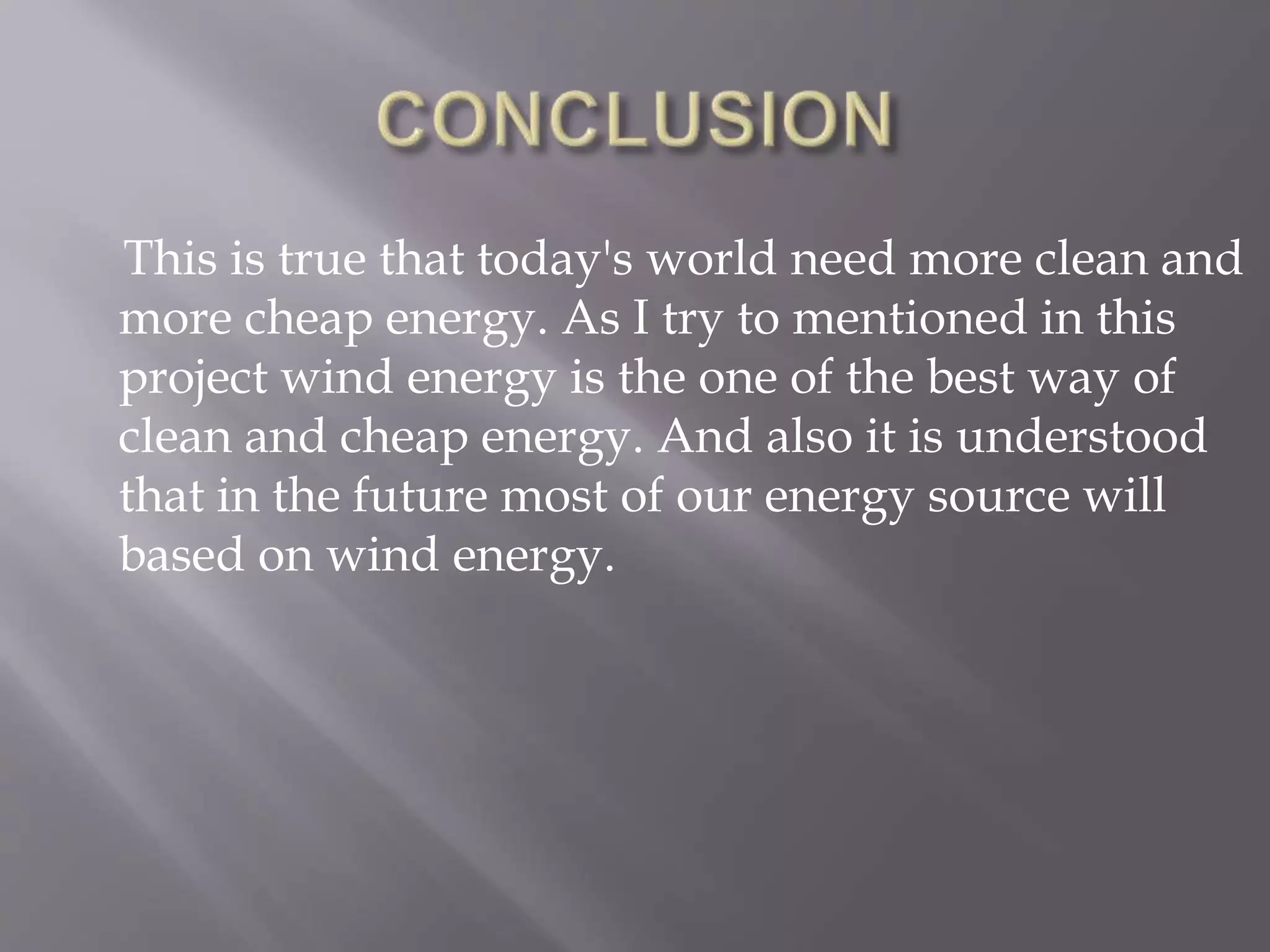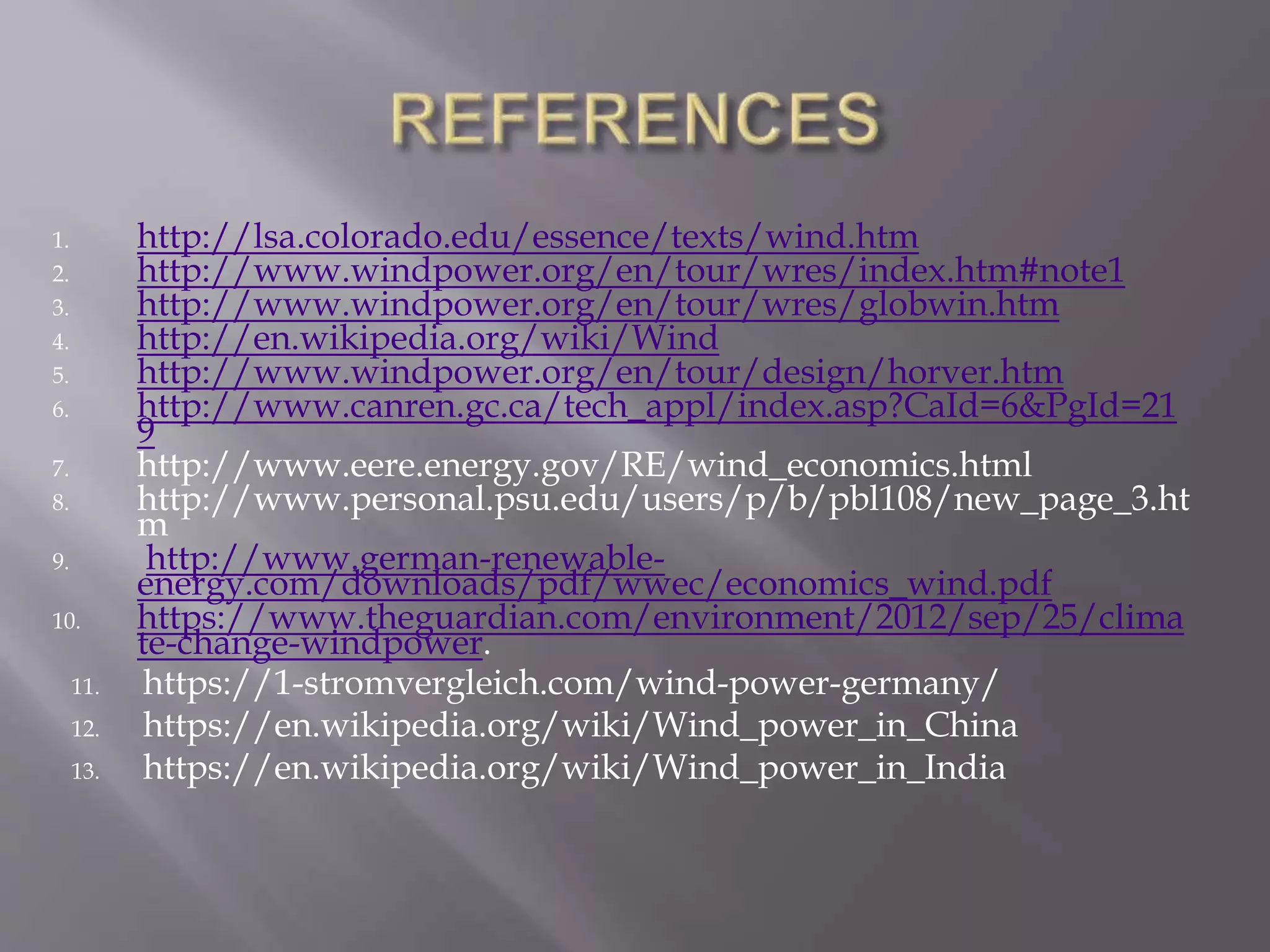The document discusses wind energy and wind turbines. It provides information on the different types of wind turbines (horizontal axis, vertical axis, old windmills), how wind power is used (powering homes, communities, industry), and wind power plants (offshore and onshore). It also gives statistics on wind capacity and generation in countries like China, Germany, India, and provides details on environmental impacts of wind turbines like noise pollution, effects on birds, and comparison to greenhouse gas emissions from traditional energy sources.
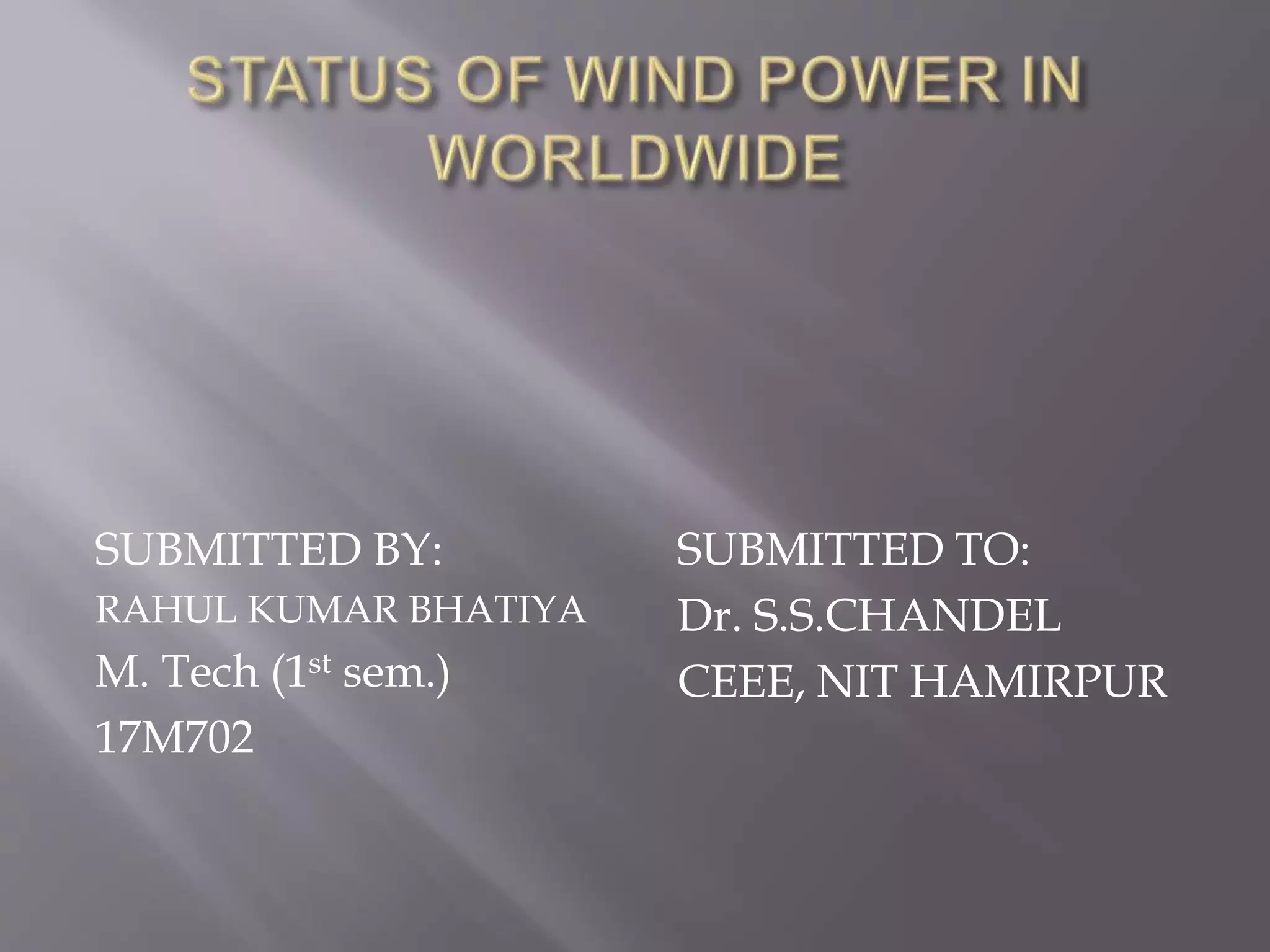
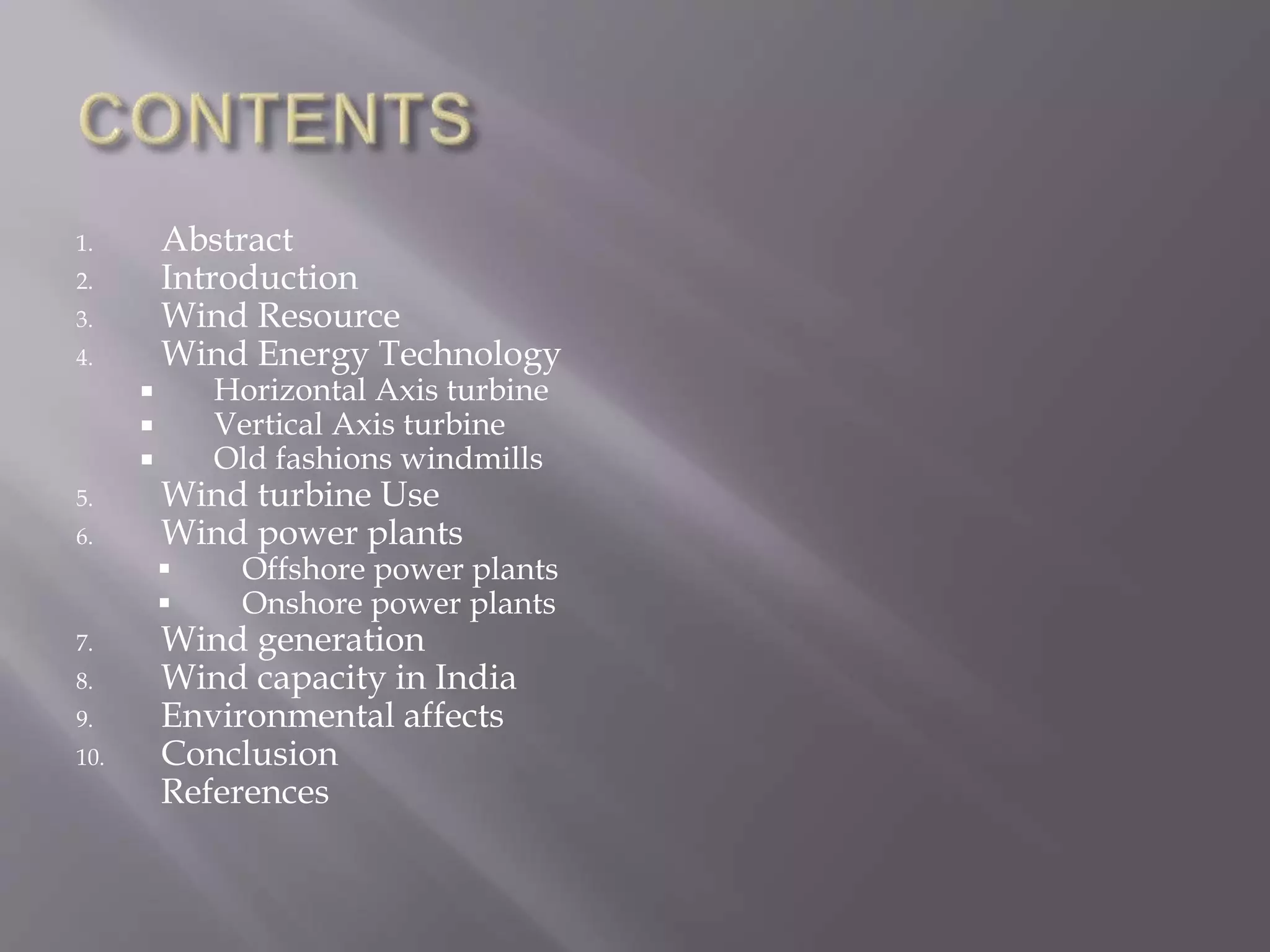
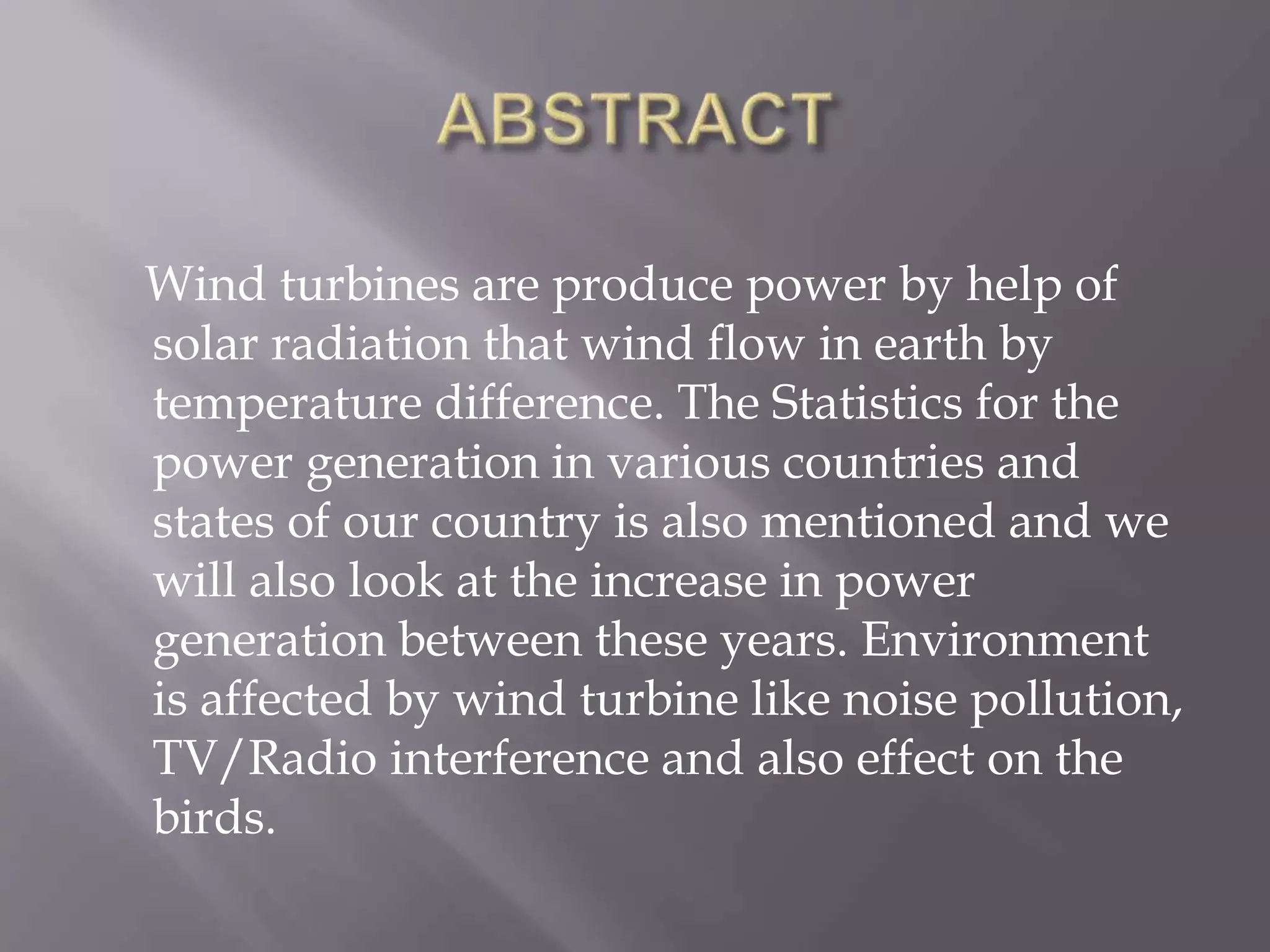
![ Wind is simply air in motion.
Wind is a form of solar energy.
Winds are caused by the uneven heating of the
atmosphere by the sun, the irregularities of the
earth's surface, and rotation of the earth[11].](https://image.slidesharecdn.com/statusofwindpowerinworldwide-180207130719/75/Status-of-wind-power-in-worldwide-4-2048.jpg)
![ All renewable energy (except tidal and
geothermal power), and even the energy in
fossil fuels, ultimately comes from the sun.
The sun radiates of 1.74 x 10 watts energy to
the earth per hour[1].
About 1 to 2 per cent of the energy coming
from the sun is converted into wind energy.
That is about 50 to 100 times more than the
energy converted into biomass by all plants on
earth [2].](https://image.slidesharecdn.com/statusofwindpowerinworldwide-180207130719/75/Status-of-wind-power-in-worldwide-5-2048.jpg)
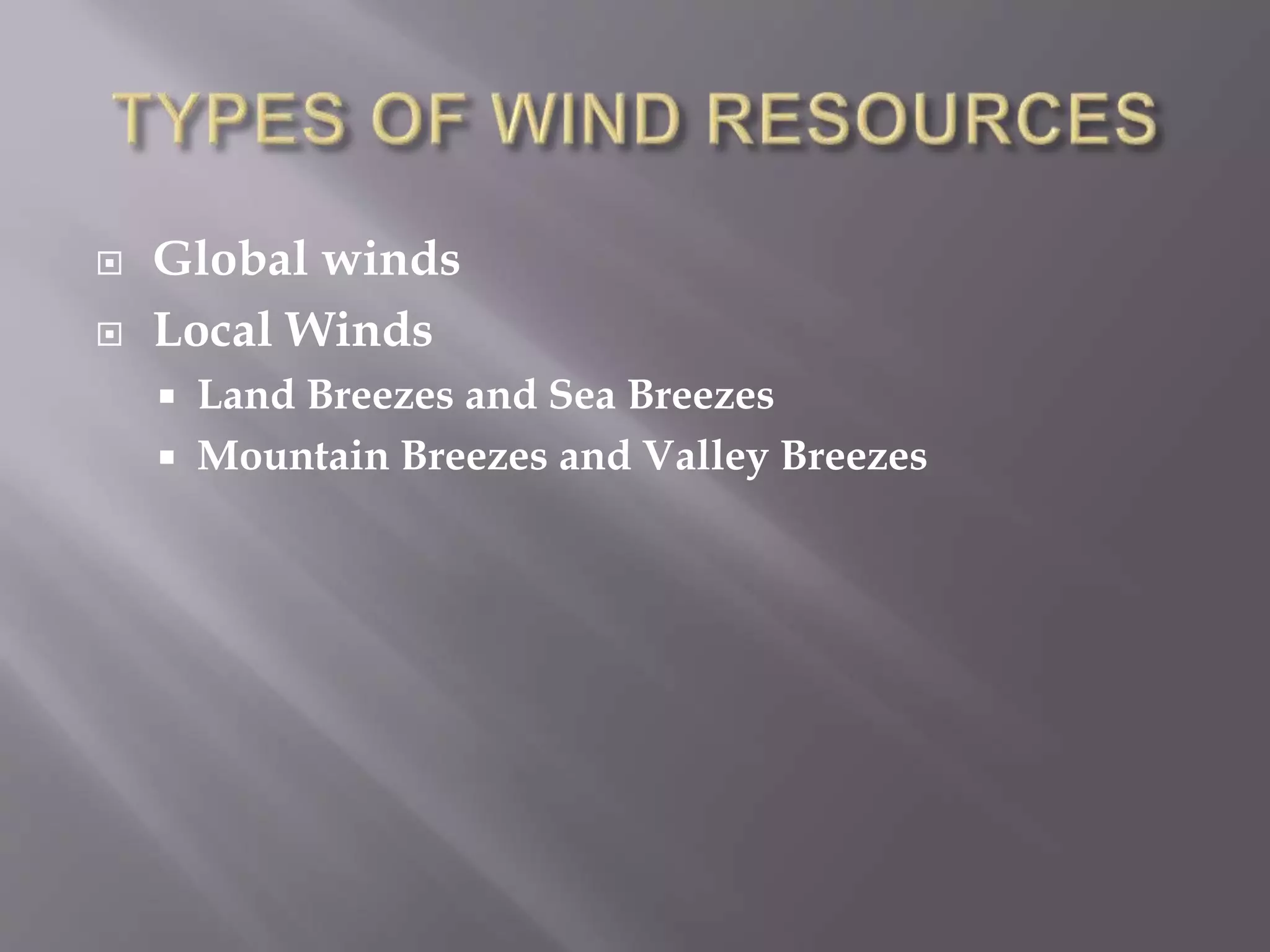
![ The wind rises from the equator and moves
north and south in the higher layers of the
atmosphere [2].
Around 30° latitude in both hemispheres the
Coriolis force prevents the air from moving
much farther.
As the wind rises from the equator there will
be a low pressure area close to ground level
attracting winds from the North and South.
At the Poles, there will be high pressure due to
the cooling of the air [3].](https://image.slidesharecdn.com/statusofwindpowerinworldwide-180207130719/75/Status-of-wind-power-in-worldwide-7-2048.jpg)
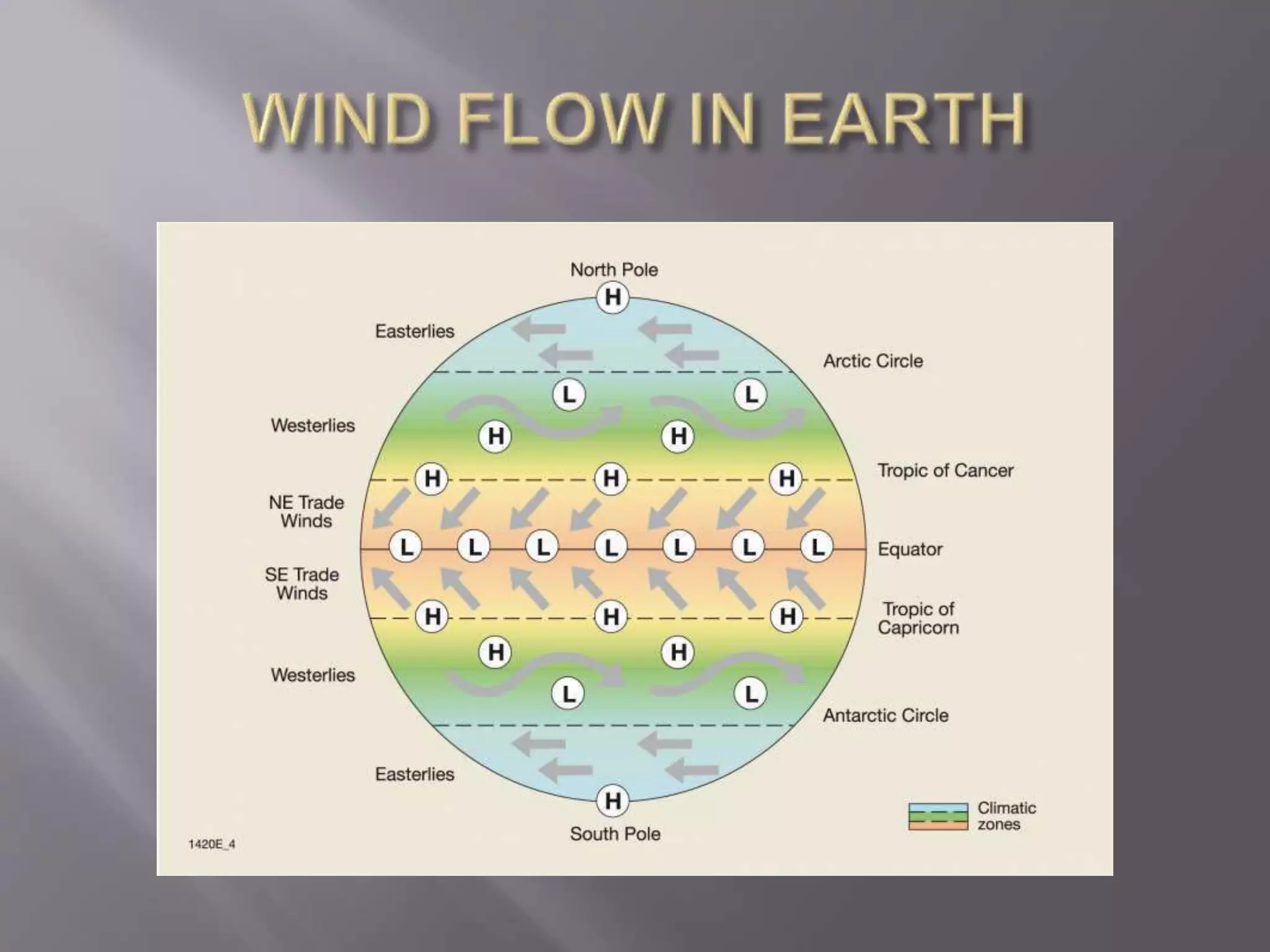
![1. Land breezes and sea breezes
Land masses are heated by the sun more
quickly than the sea in the daytime.
The land breeze at night generally has lower
wind speeds, because the temperature
difference between land and sea is smaller at
night [2].](https://image.slidesharecdn.com/statusofwindpowerinworldwide-180207130719/75/Status-of-wind-power-in-worldwide-9-2048.jpg)
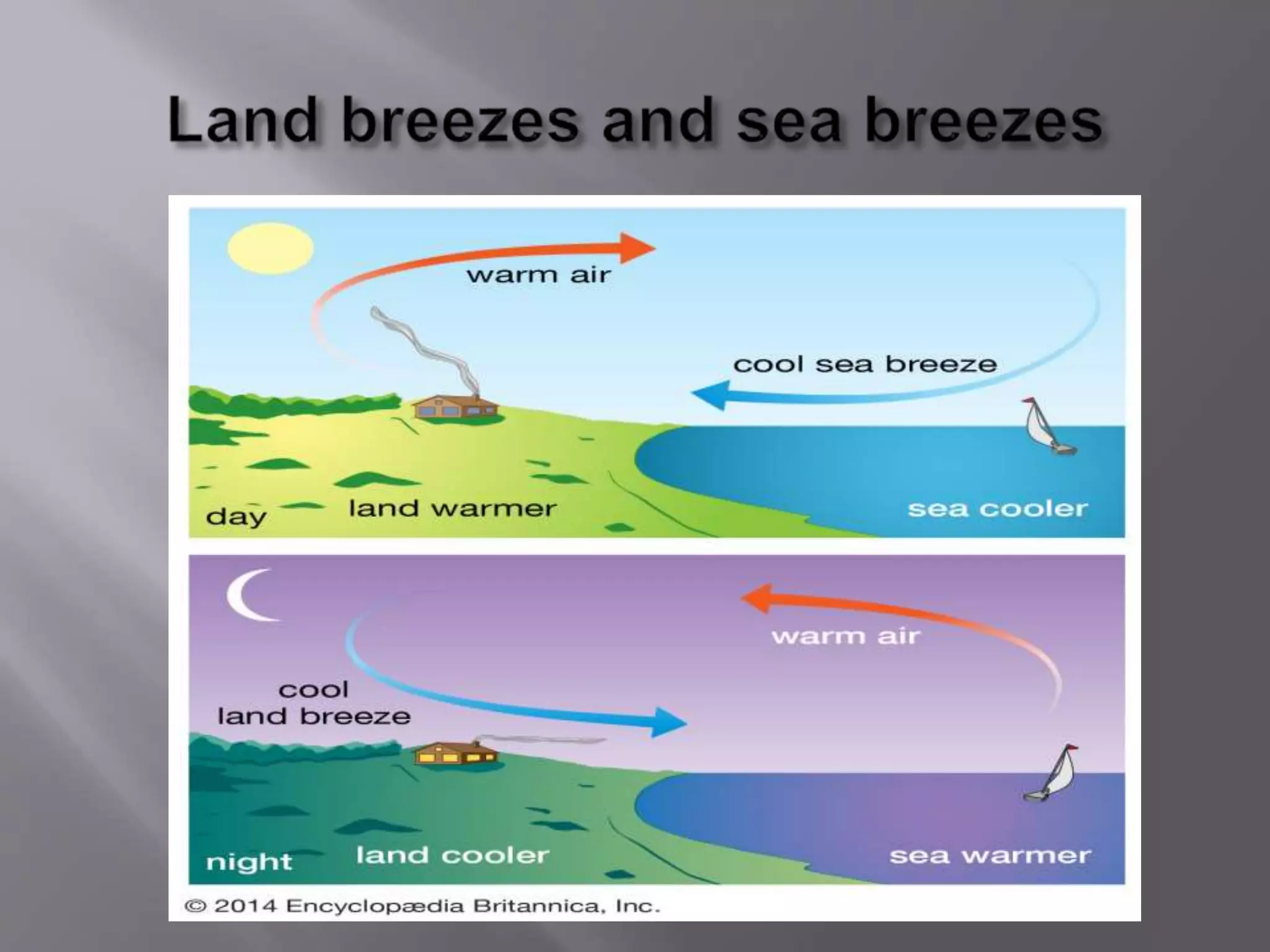
![2. Mountain breezes and Valley breezes
Mountain breezes and Valley breezes are due
to a combination of differential heating and
geometry.
When the sun rises, it is the tops of the
mountain peaks which receive first light, and
as the day progresses, the mountain slopes
take on a greater heat load than the valleys[4].](https://image.slidesharecdn.com/statusofwindpowerinworldwide-180207130719/75/Status-of-wind-power-in-worldwide-11-2048.jpg)
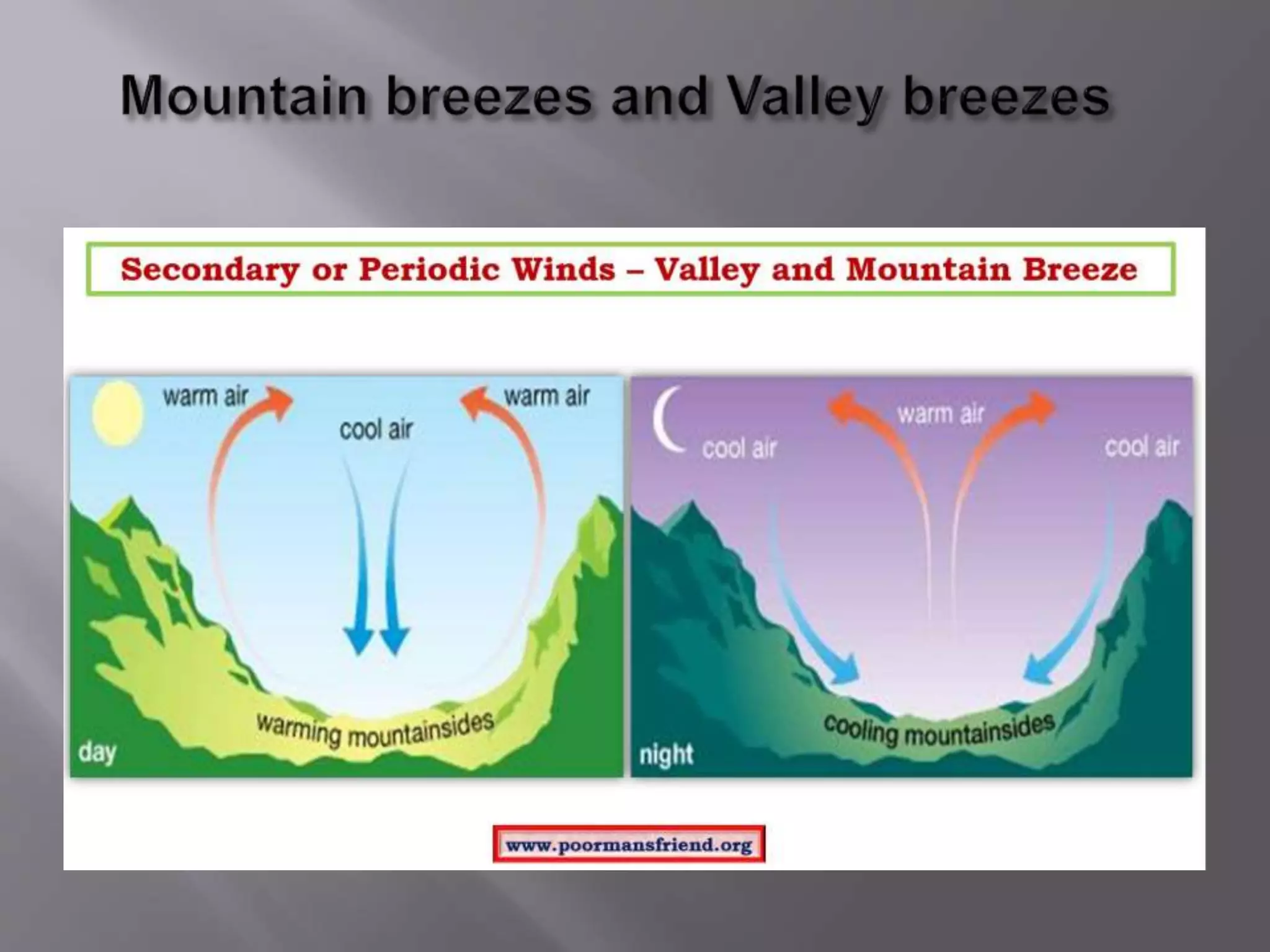
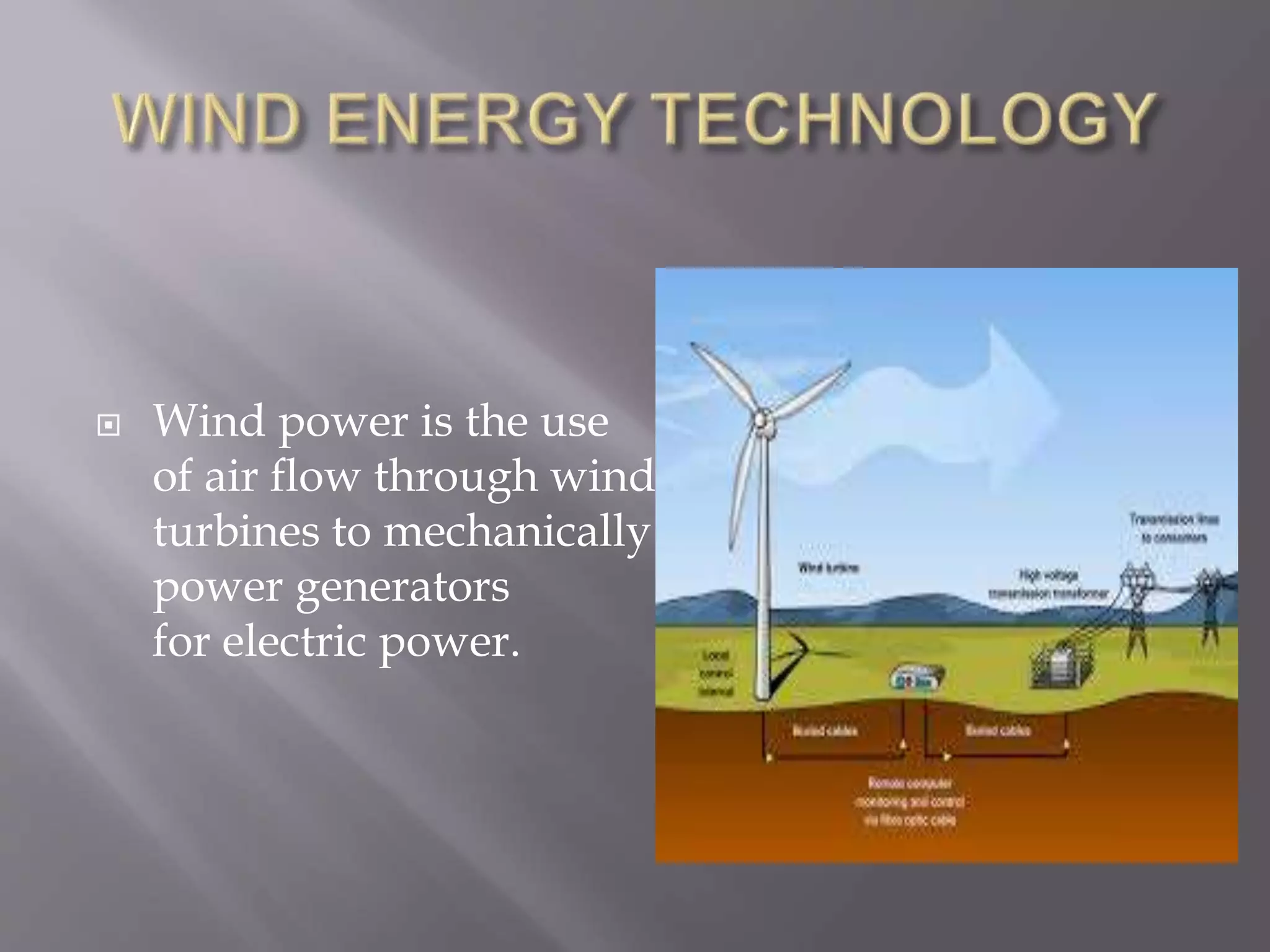
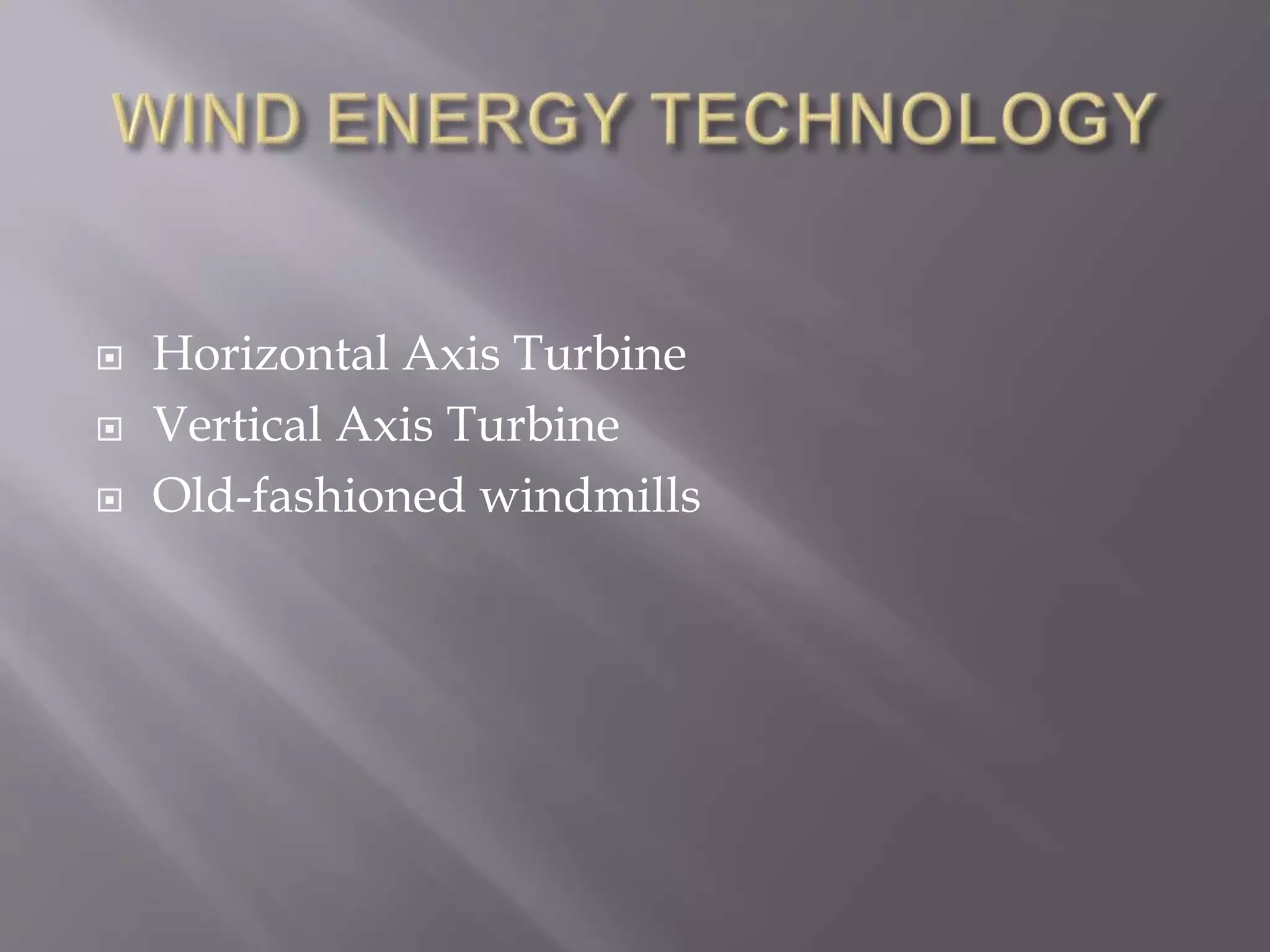
![ The reason is simple: All grid-connected
commercial wind turbines today are built with
a propeller-type rotor on a horizontal axis (i.e. a
horizontal main shaft).
The purpose of the rotor, of course, is to
convert the linear motion of the wind into
rotational energy that can be used to drive a
generator[5].](https://image.slidesharecdn.com/statusofwindpowerinworldwide-180207130719/75/Status-of-wind-power-in-worldwide-15-2048.jpg)
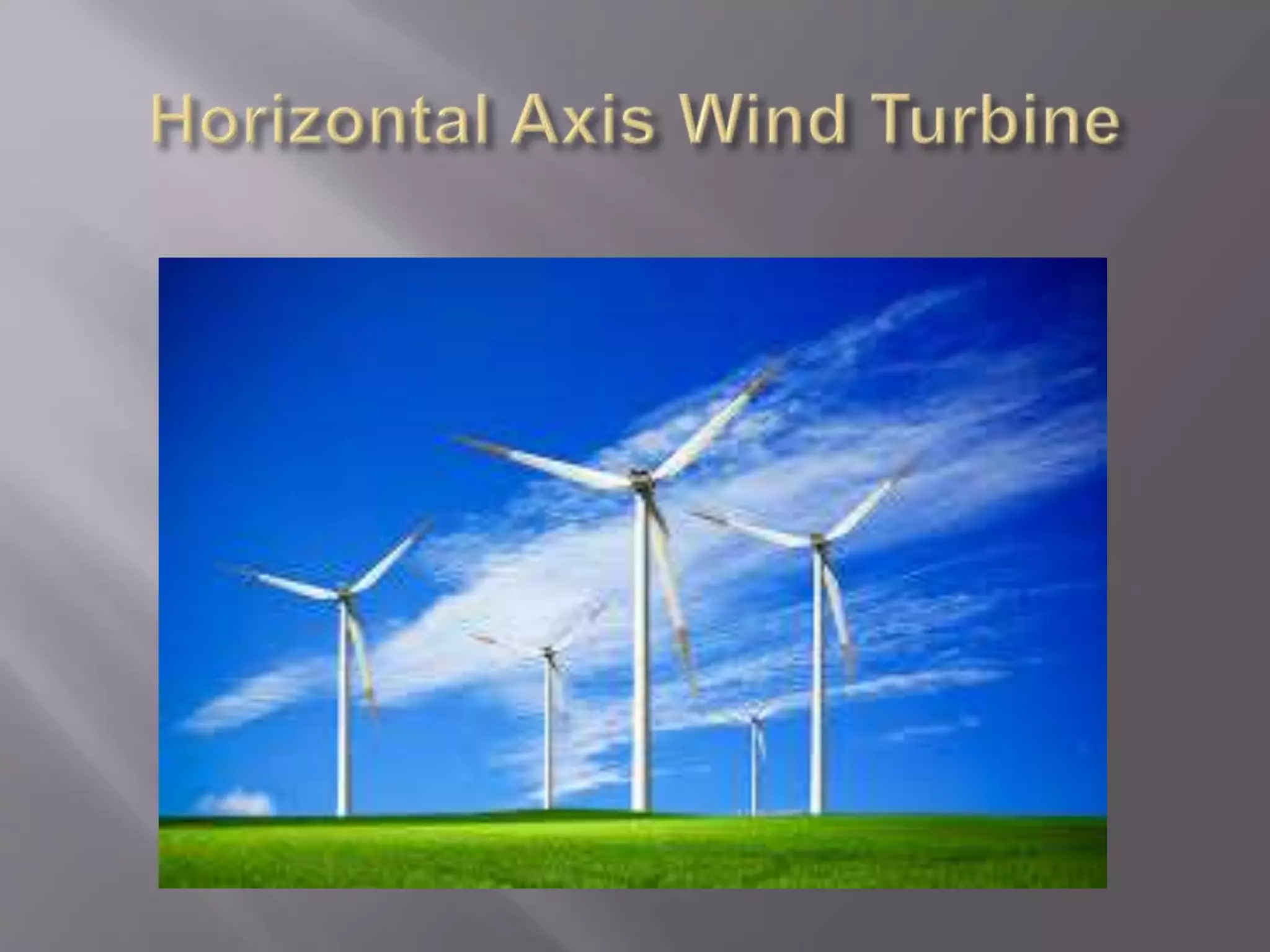
![ Vertical axis wind turbines are a bit like water
wheels in that sense.
the main components are located at the base of
the turbine.
Some vertical axis turbine types could actually
work with a horizontal axis as well, but they
would hardly be able to beat the efficiency of a
propeller-type turbine[5].](https://image.slidesharecdn.com/statusofwindpowerinworldwide-180207130719/75/Status-of-wind-power-in-worldwide-17-2048.jpg)
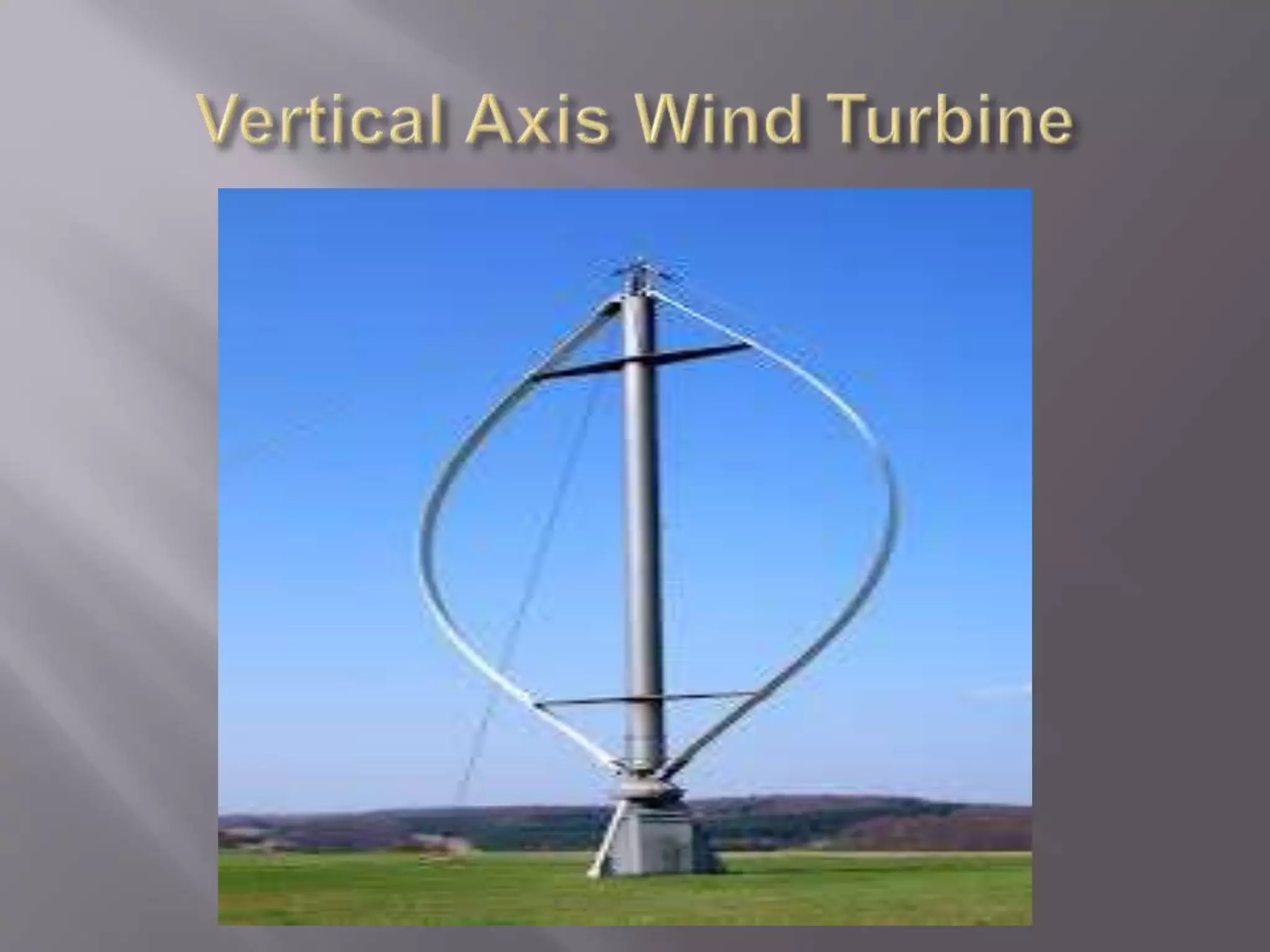
![ A windmill is a mill that converts the energy of
wind into rotational energy by means of vanes
called sail or blades.
windmills usually were used to mill grain,
pump water or both[6].](https://image.slidesharecdn.com/statusofwindpowerinworldwide-180207130719/75/Status-of-wind-power-in-worldwide-19-2048.jpg)
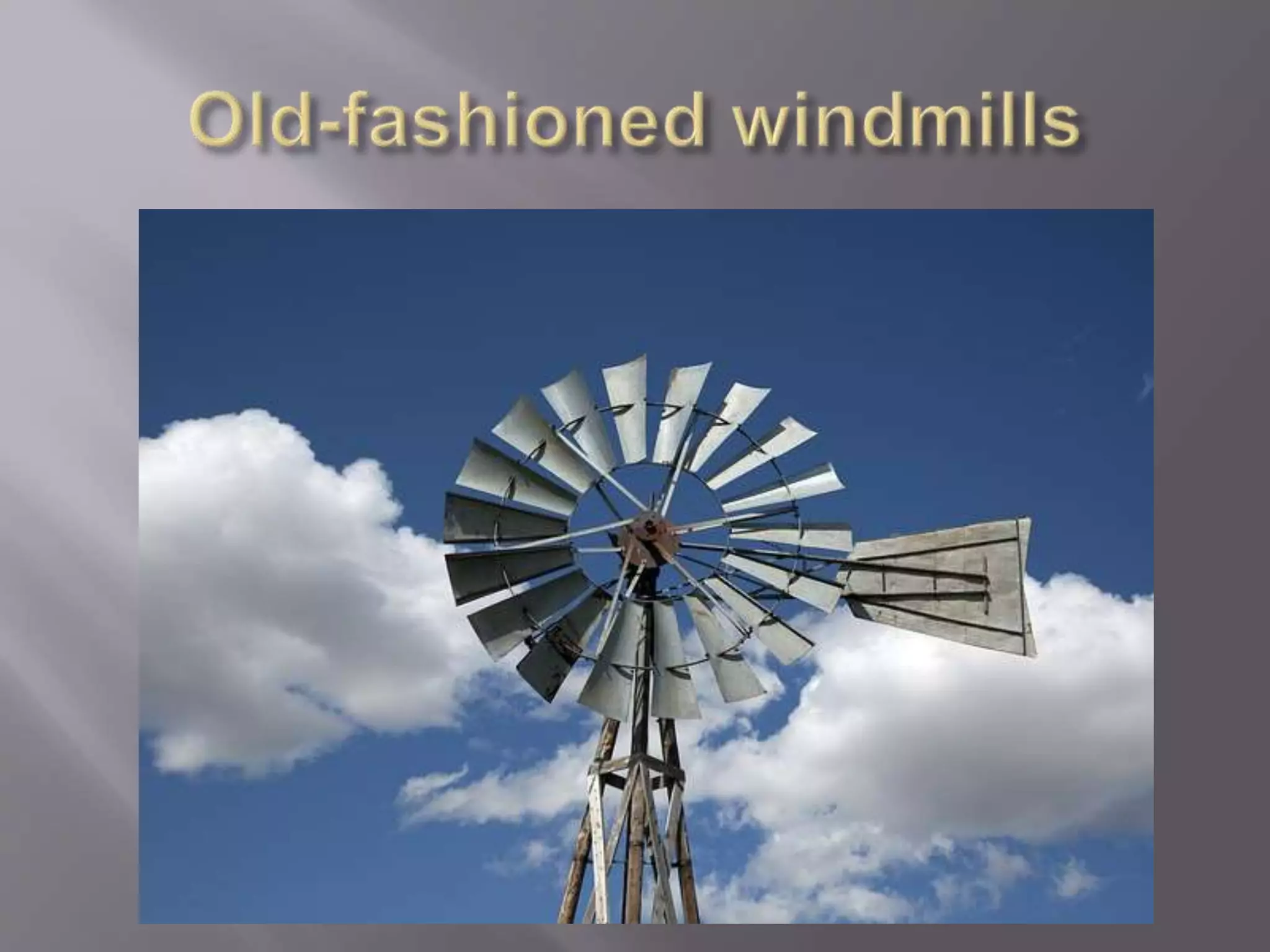
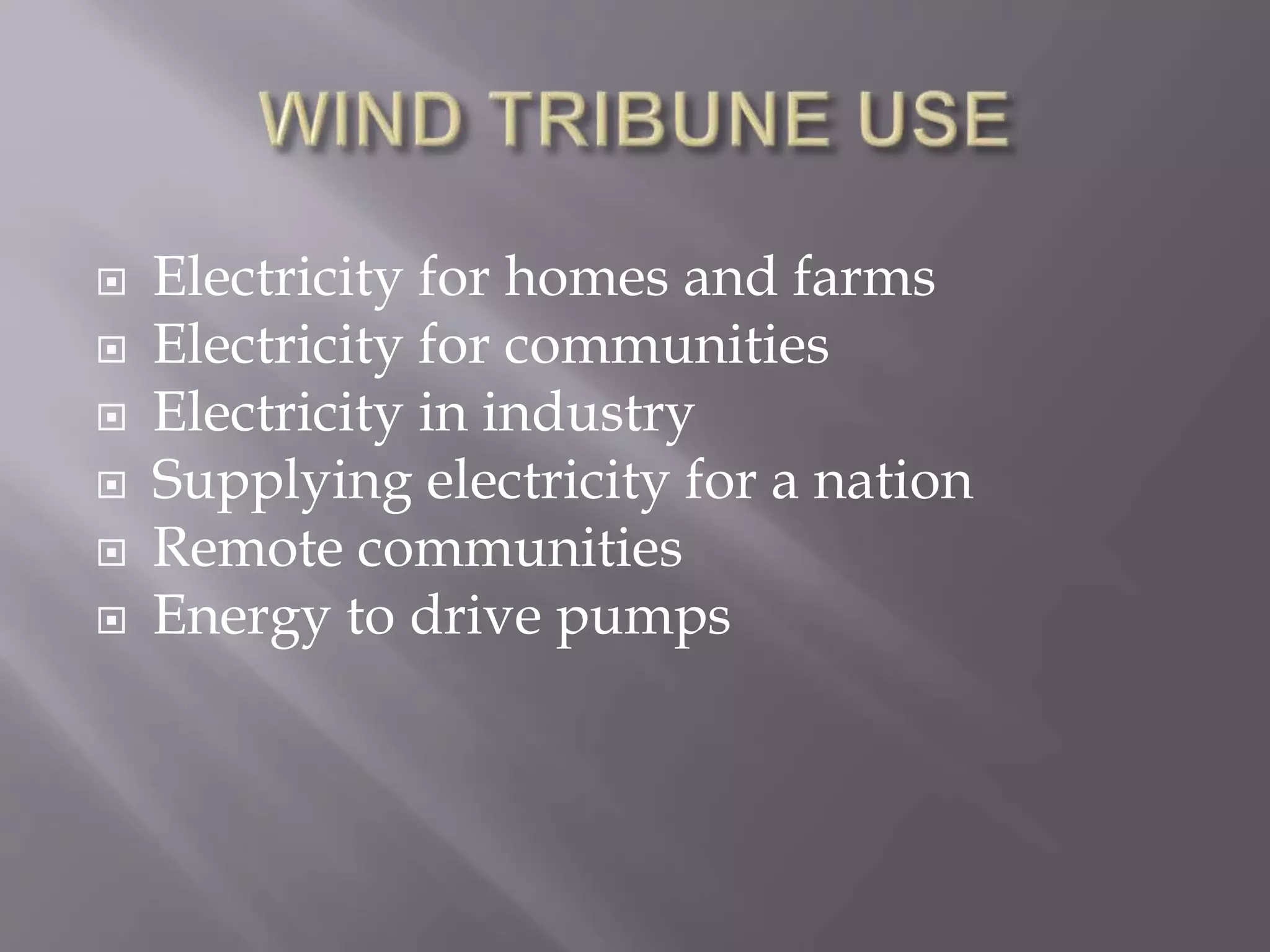
![ Small and medium
wind turbine
generators at homes,
farms or small
industrial sites can
be used with
connected to the
electrical supply
grid[7].](https://image.slidesharecdn.com/statusofwindpowerinworldwide-180207130719/75/Status-of-wind-power-in-worldwide-22-2048.jpg)
![ Community wind projects are locally owned
by farmers, investors, businesses, schools,
utilities, or other public or private entities.
Who utilize wind energy to support and
reduce energy costs to the local community[7].](https://image.slidesharecdn.com/statusofwindpowerinworldwide-180207130719/75/Status-of-wind-power-in-worldwide-23-2048.jpg)
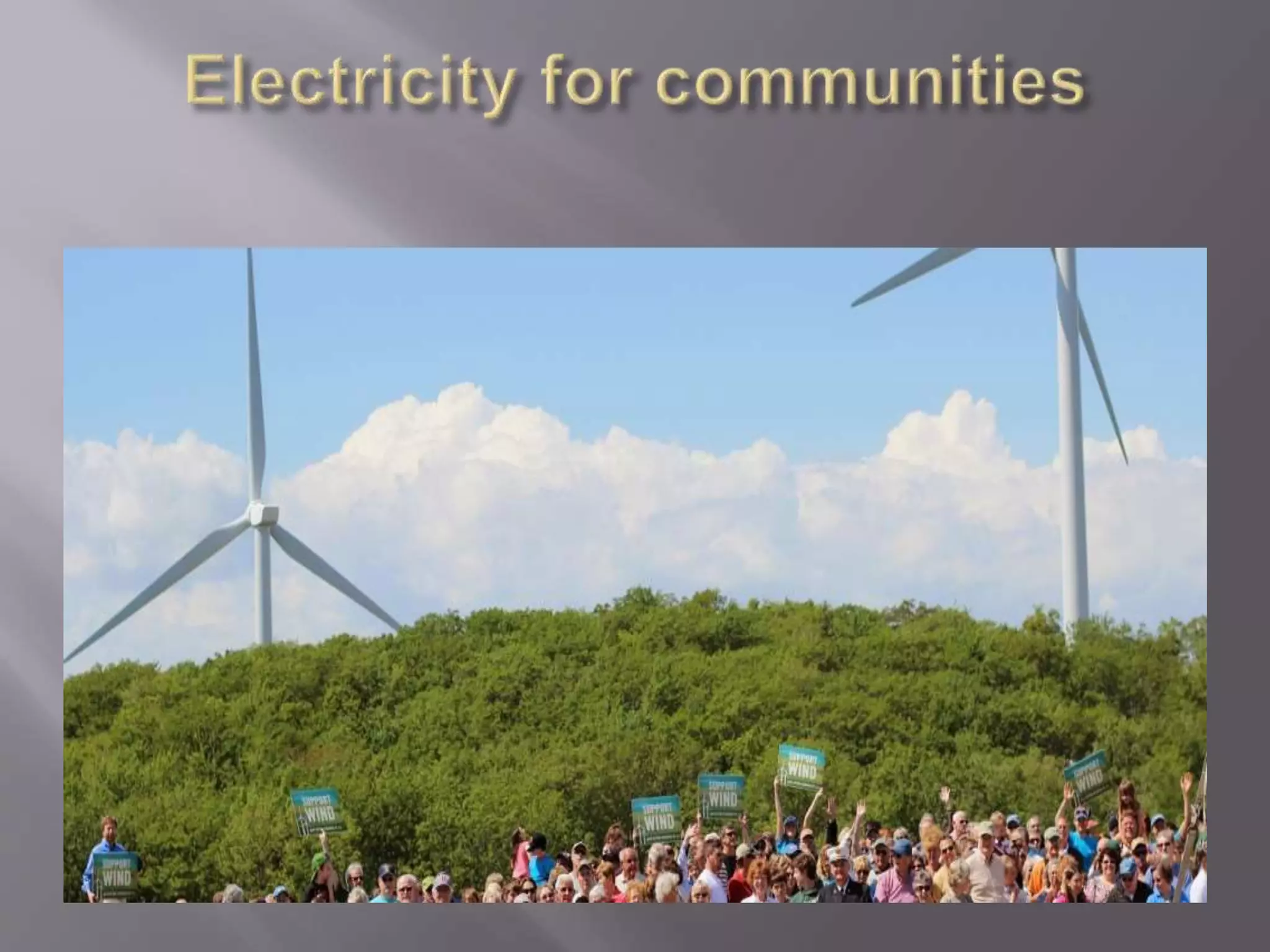
![ Medium systems (10 to 100 kilowatts) can be
used by large farms.
Large systems (100 kilowatts to 1 megawatt)
can be used either individually or in small
clusters to provide electricity to industries,
large farms[7].](https://image.slidesharecdn.com/statusofwindpowerinworldwide-180207130719/75/Status-of-wind-power-in-worldwide-25-2048.jpg)
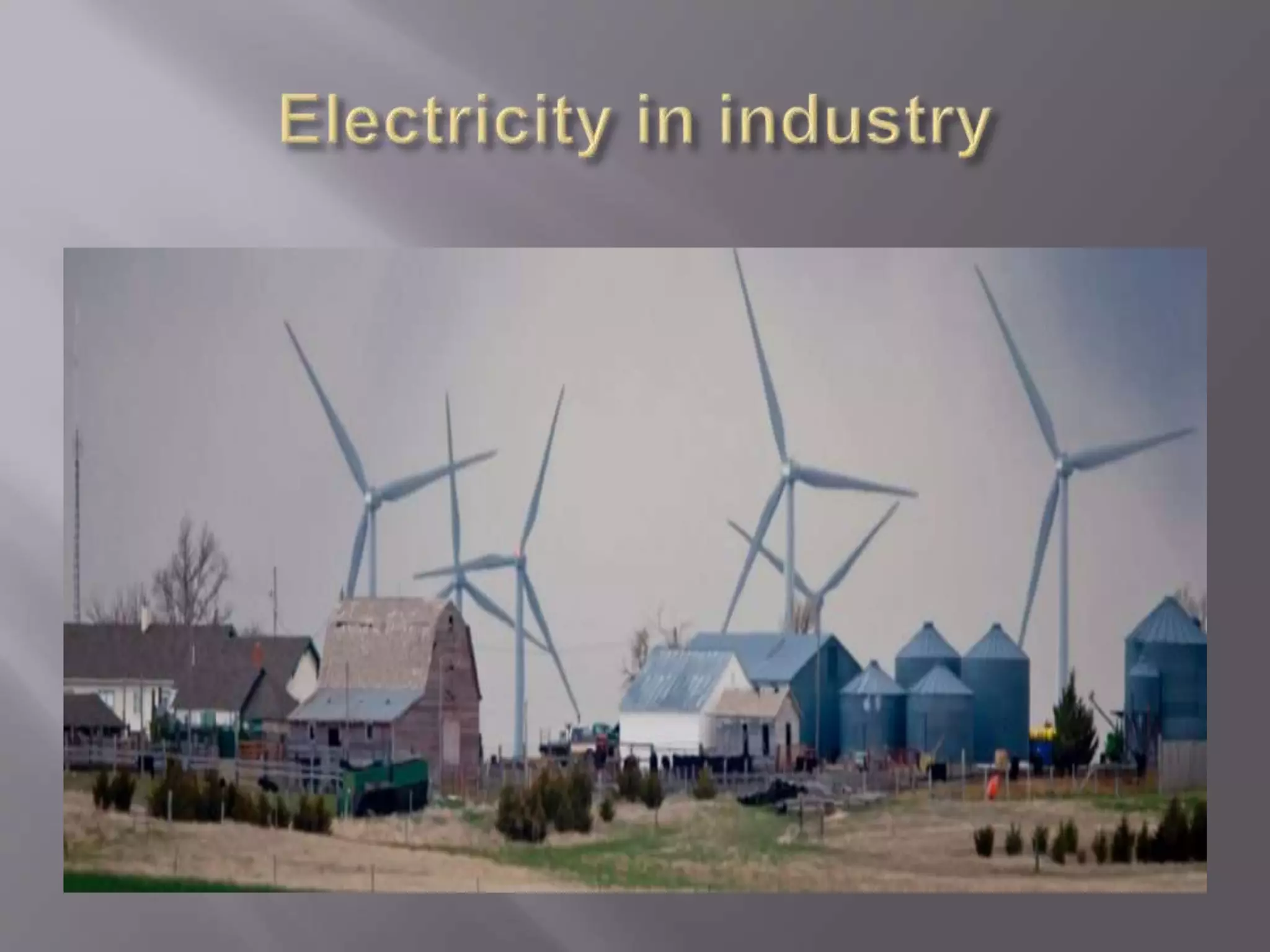
![ Arrays of large wind turbine generators can be
connected to electricity supply grids.
In Denmark, for example, wind-generated
electricity now provides about 10 % of national
needs and is scheduled to provide 50 % of the
need by 2030 [7].](https://image.slidesharecdn.com/statusofwindpowerinworldwide-180207130719/75/Status-of-wind-power-in-worldwide-27-2048.jpg)
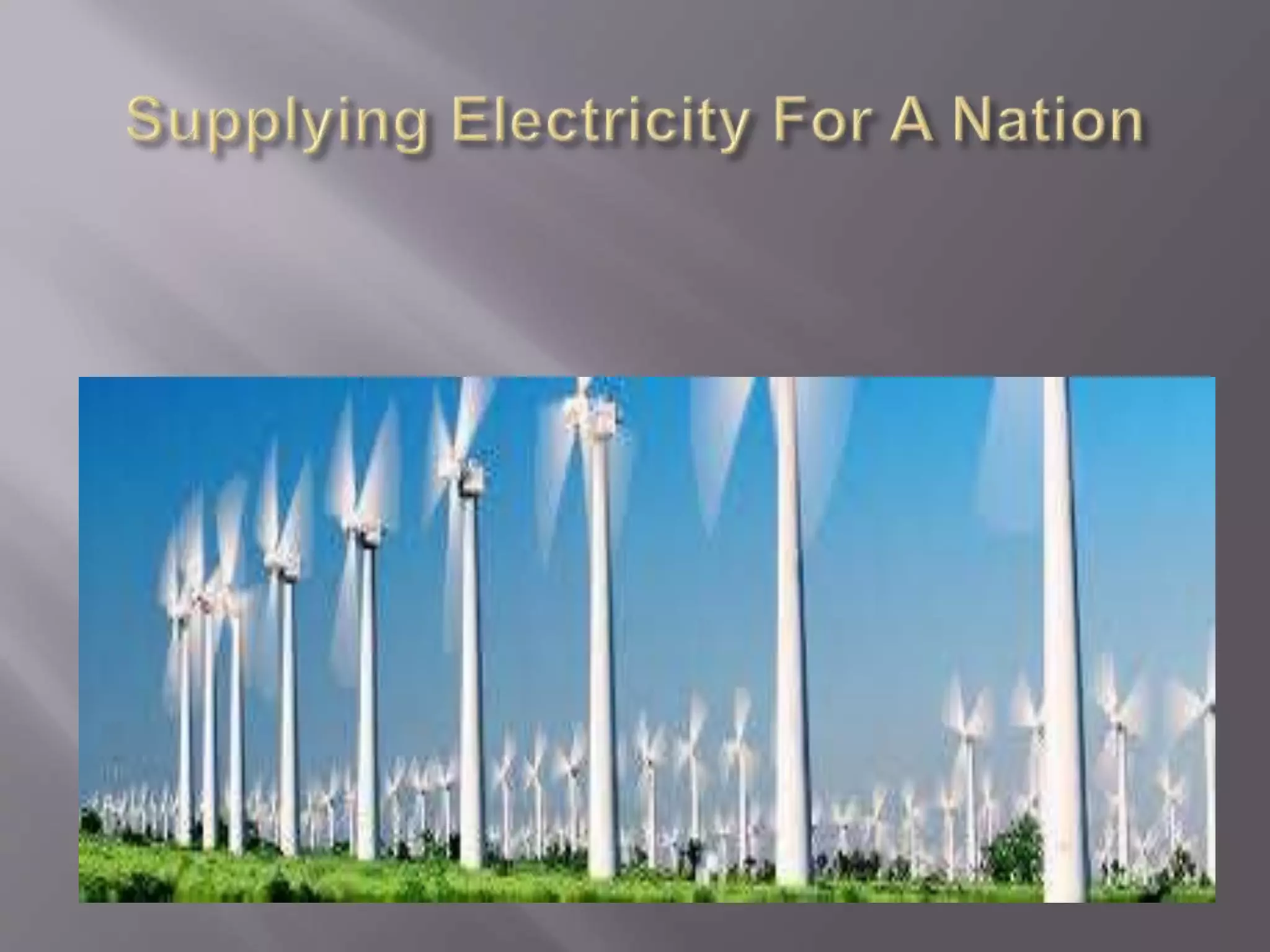
![ Small wind turbine generators that are
connected to batteries can provide sufficient
electricity for rural dwellings.
Small and medium wind turbines may also be
used for pumping, either by direct drive or by
powering electric pumps [7].](https://image.slidesharecdn.com/statusofwindpowerinworldwide-180207130719/75/Status-of-wind-power-in-worldwide-29-2048.jpg)
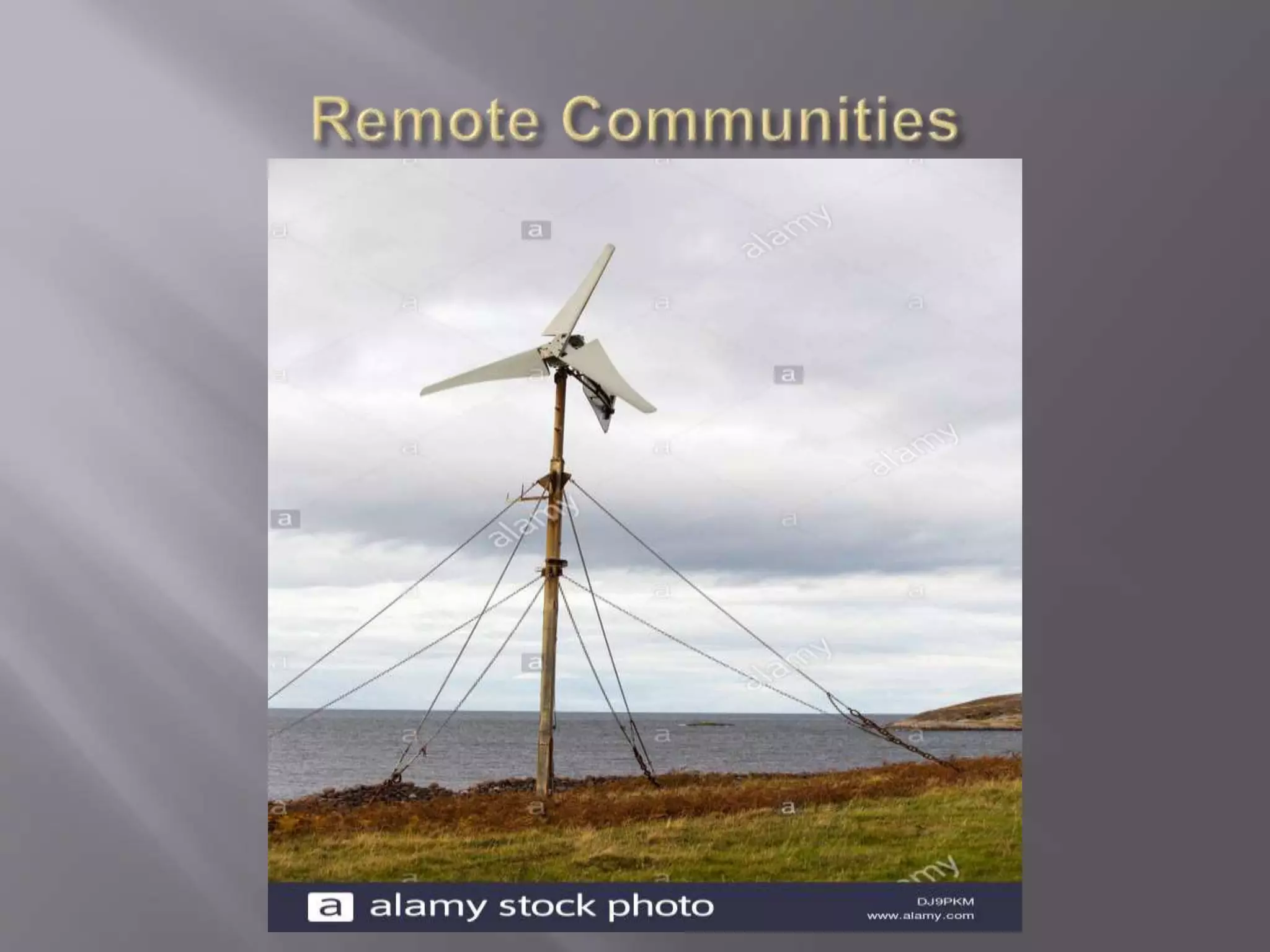
![ A wind turbine can be used to drive a rotating
or reciprocating pump.
Wind turbine, a wind pump has a rotor, a
tower, and foundations.
The hydraulic pump replaces the generator.
The rotor shaft drives the pump directly[7].](https://image.slidesharecdn.com/statusofwindpowerinworldwide-180207130719/75/Status-of-wind-power-in-worldwide-31-2048.jpg)
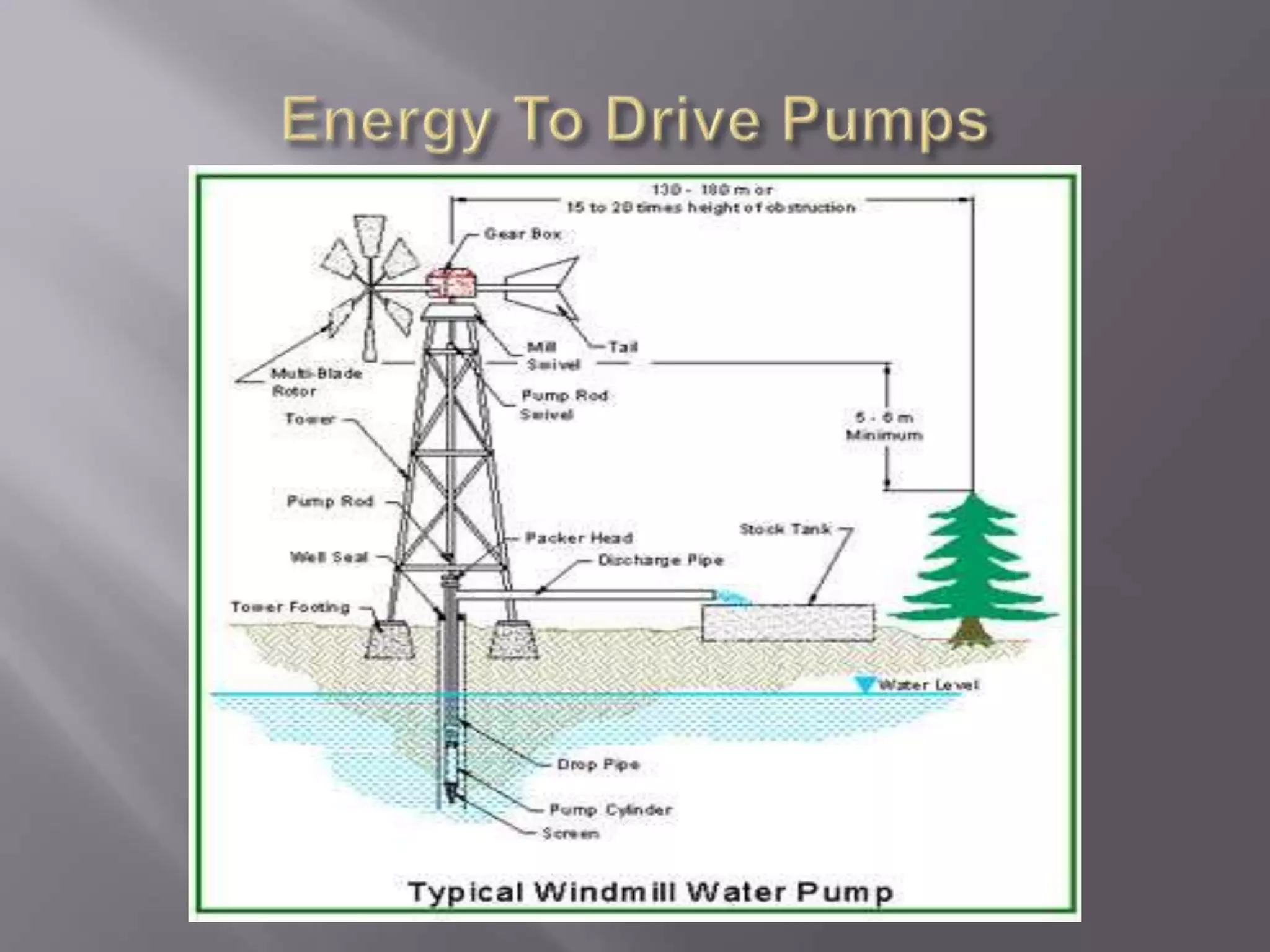
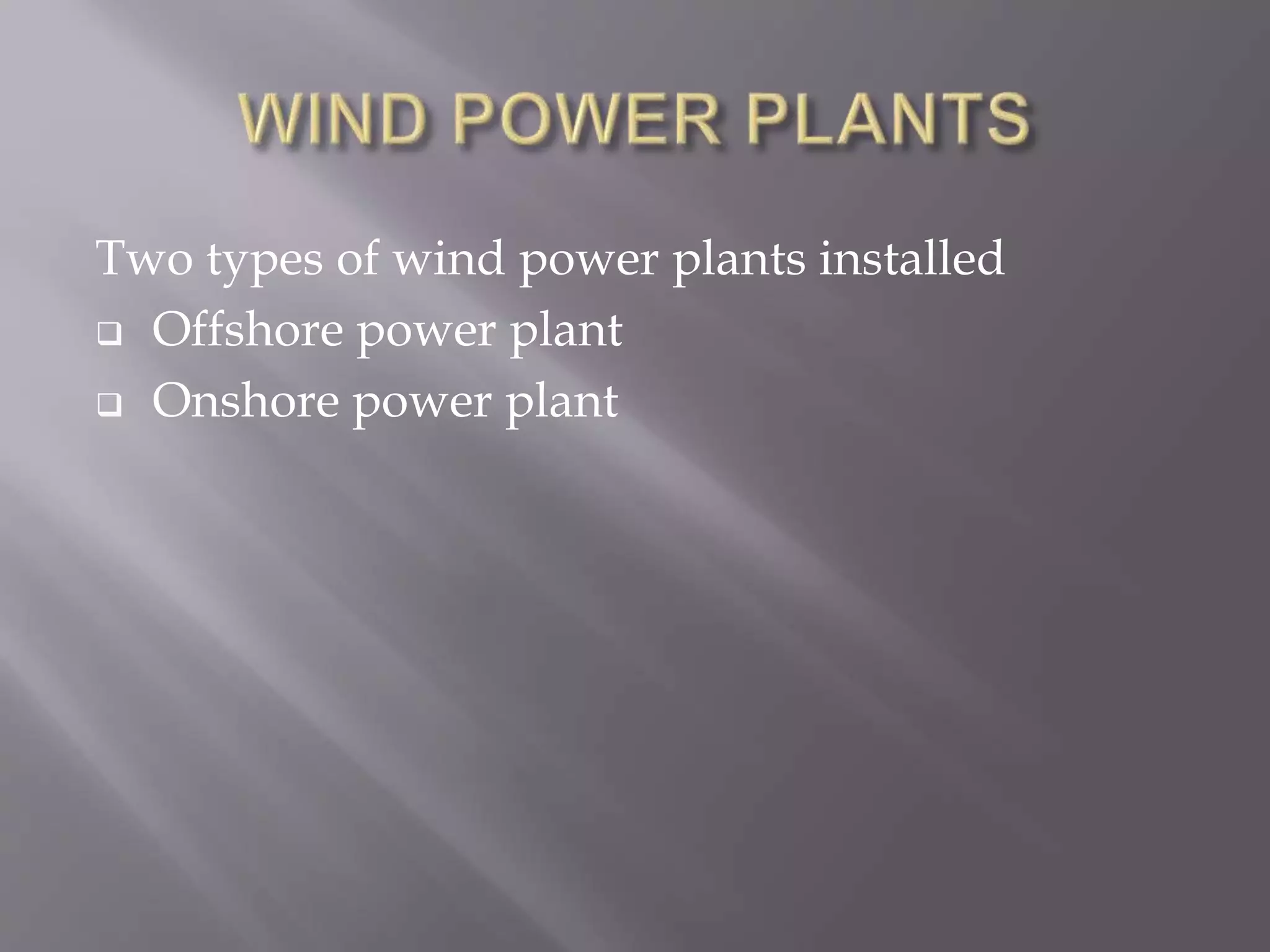
![ offshore turbines are located out at sea or in
freshwater[10].
Top three offshore power plants in the world
1) UK {London Array} – 630MW
2) Netherlands {Gemini wind farm} – 600MW
3) Germany {Gode wind} – 582MW](https://image.slidesharecdn.com/statusofwindpowerinworldwide-180207130719/75/Status-of-wind-power-in-worldwide-34-2048.jpg)
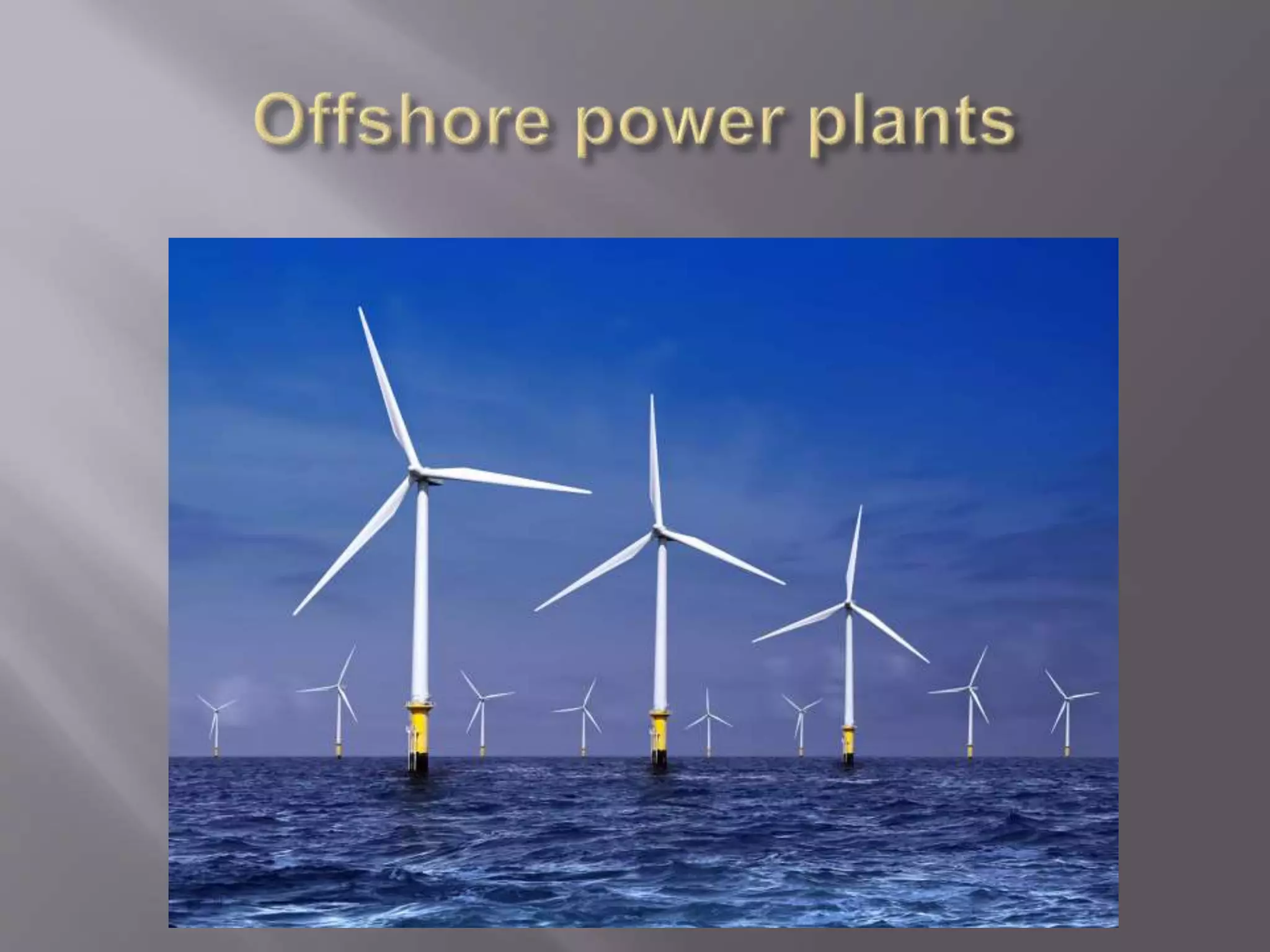
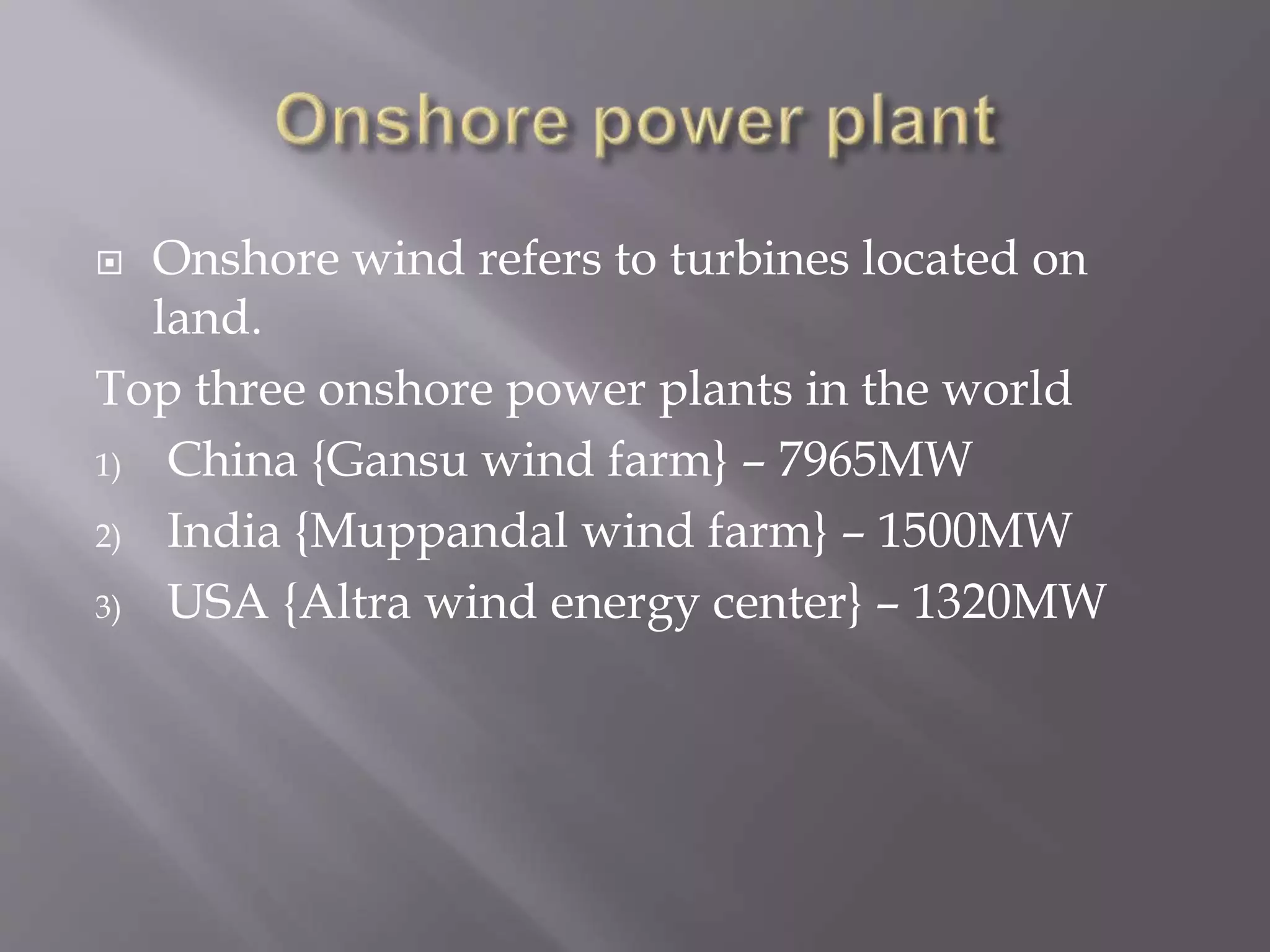
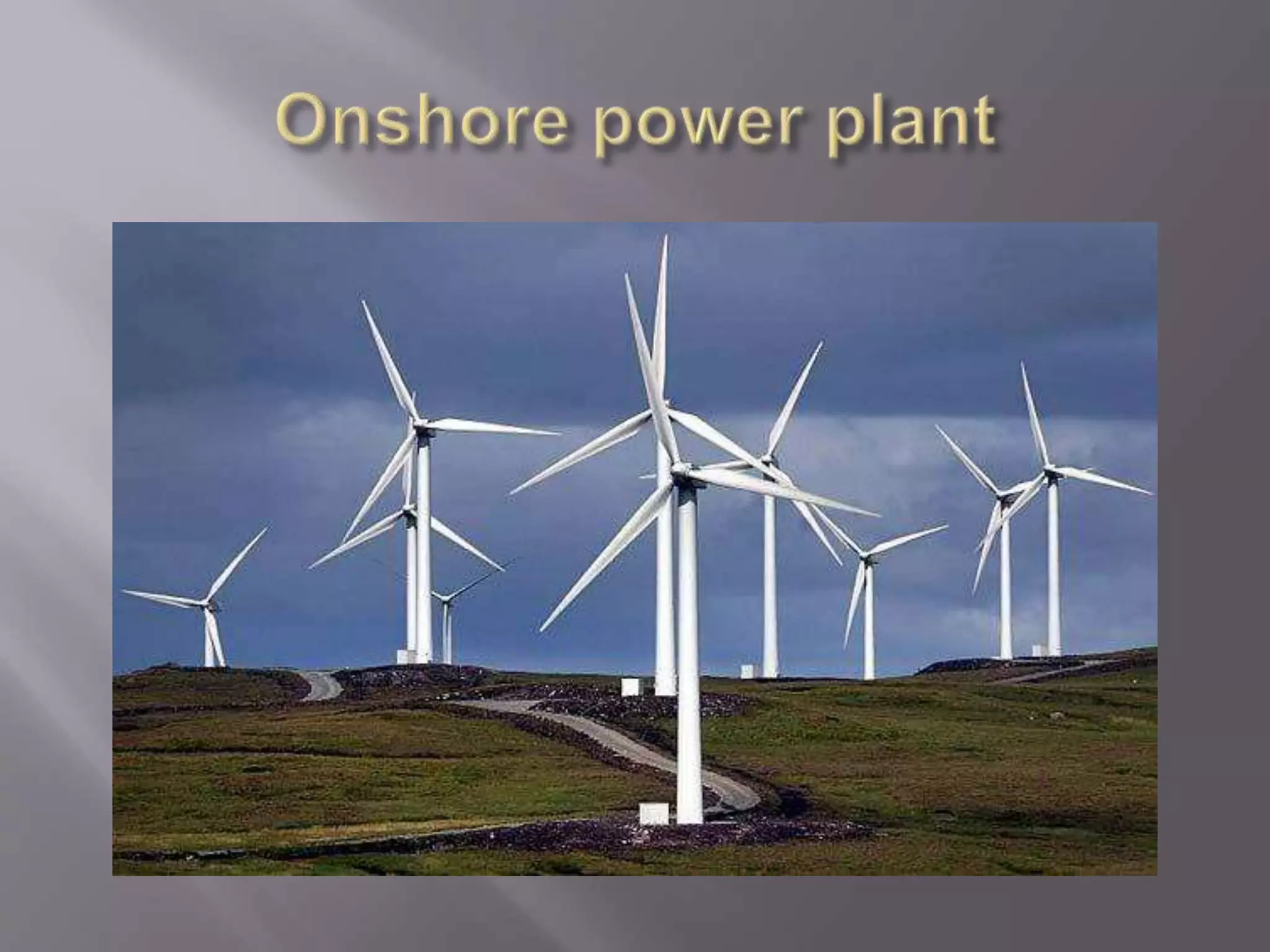
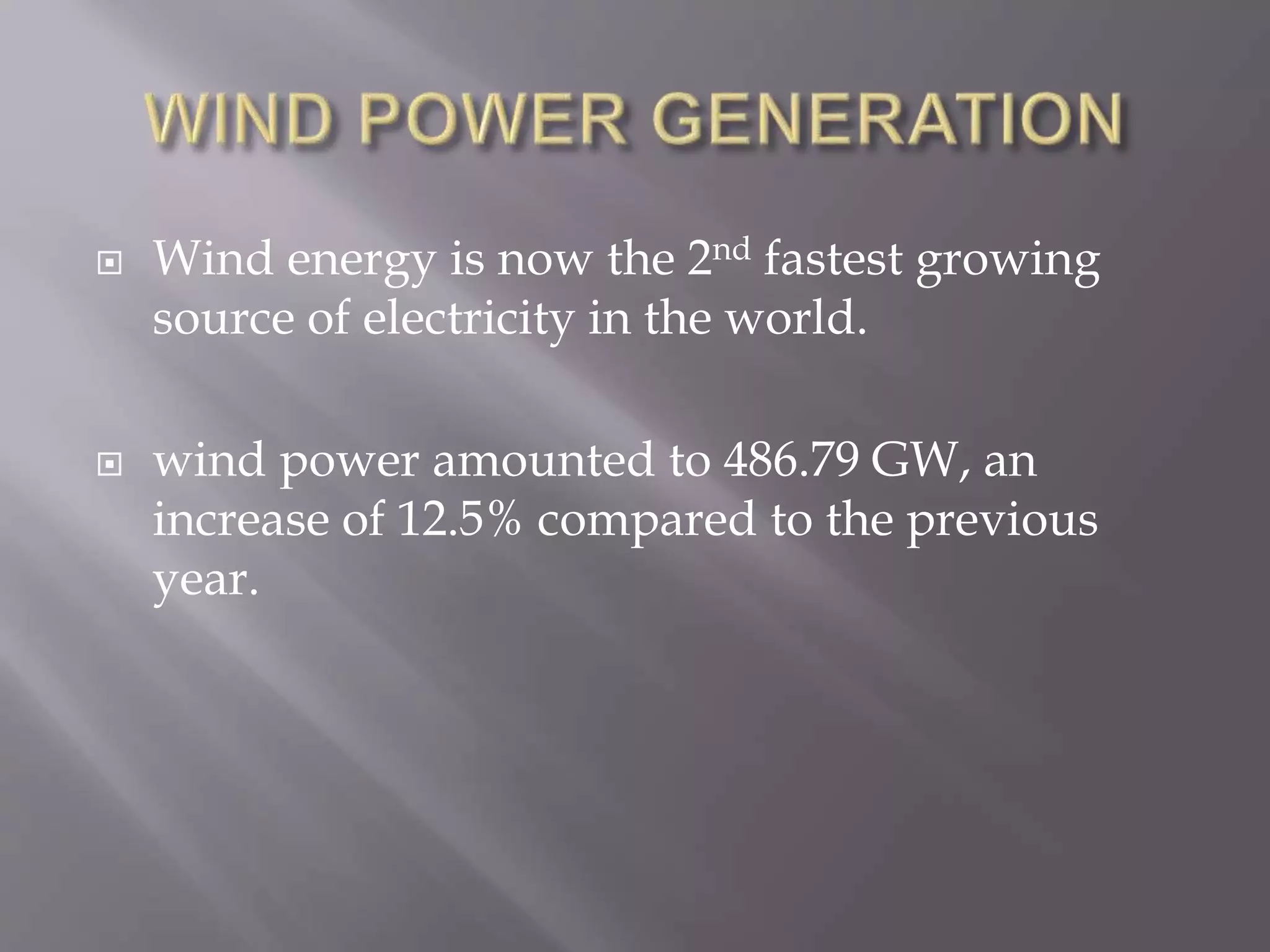
![ 2006 to 2016 increase the capacity 7.4GW to
486.9GW in world.
China installed 23.3 GW of wind power
capacity in 2016.
China has a 1st rank in power generation by
wind turbines in the world.
China set an ambitious goal of 5 GW of
installed offshore wind capacity by 2015 and 30
GW by 2020[12].](https://image.slidesharecdn.com/statusofwindpowerinworldwide-180207130719/75/Status-of-wind-power-in-worldwide-39-2048.jpg)
![ China has about 2,380 GW of exploitable capacity
on land and 200 GW on the sea.
The installed capacity of wind power in
Germany was 50 GW in 2016.
wind power producing about 10.27 percent of
Germany’s total electrical power[11].](https://image.slidesharecdn.com/statusofwindpowerinworldwide-180207130719/75/Status-of-wind-power-in-worldwide-40-2048.jpg)
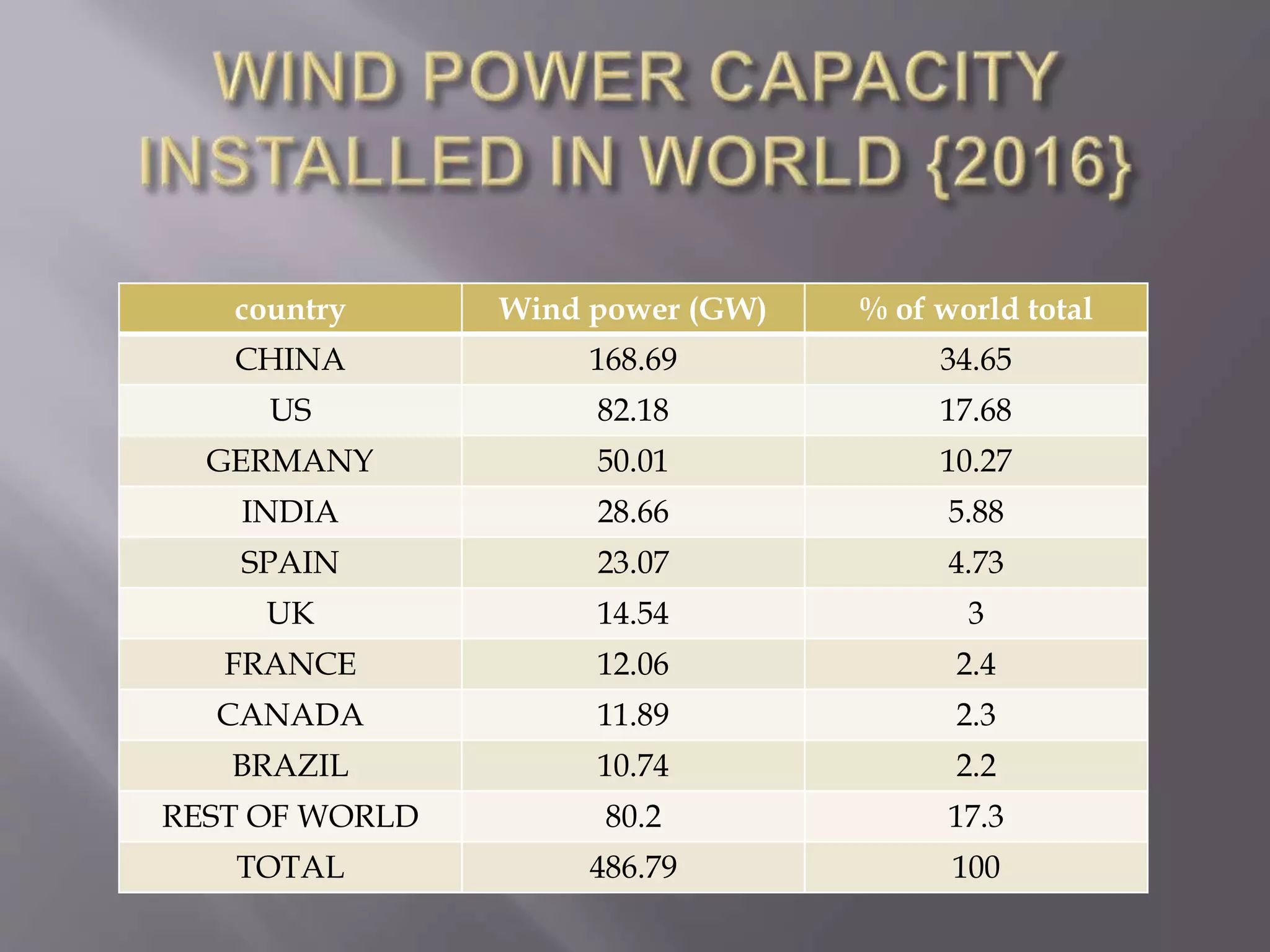
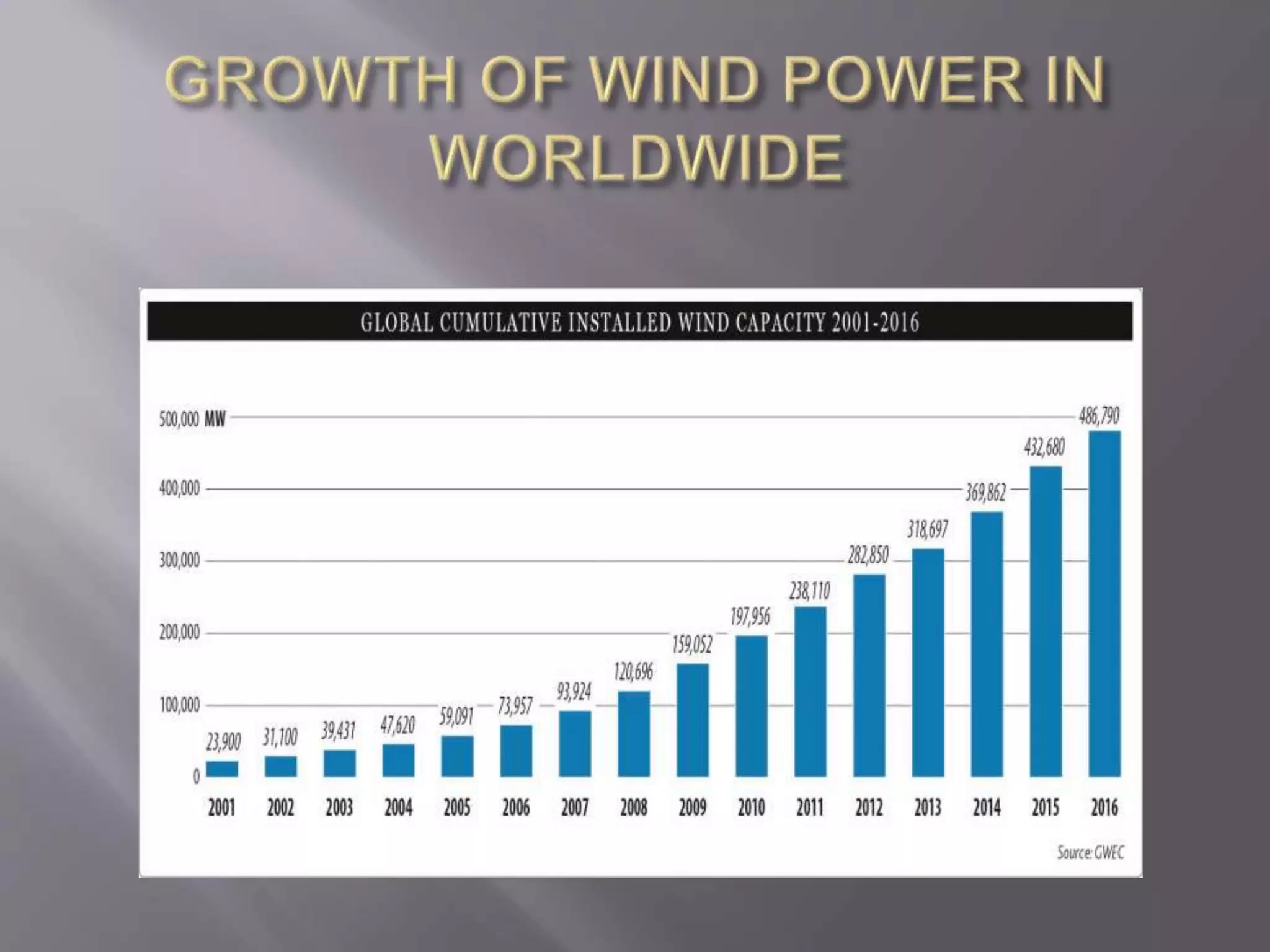
![ In 2015 INDIA has the 4th largest installed wind
power capacity in the world.
End of march 2017 the total installed wind power
capacity was 32.17GW.
India adds record 5.4GW wind power in 2016-17.
Total installed renewable power across country
50GW over 55% is wind power[13].](https://image.slidesharecdn.com/statusofwindpowerinworldwide-180207130719/75/Status-of-wind-power-in-worldwide-43-2048.jpg)
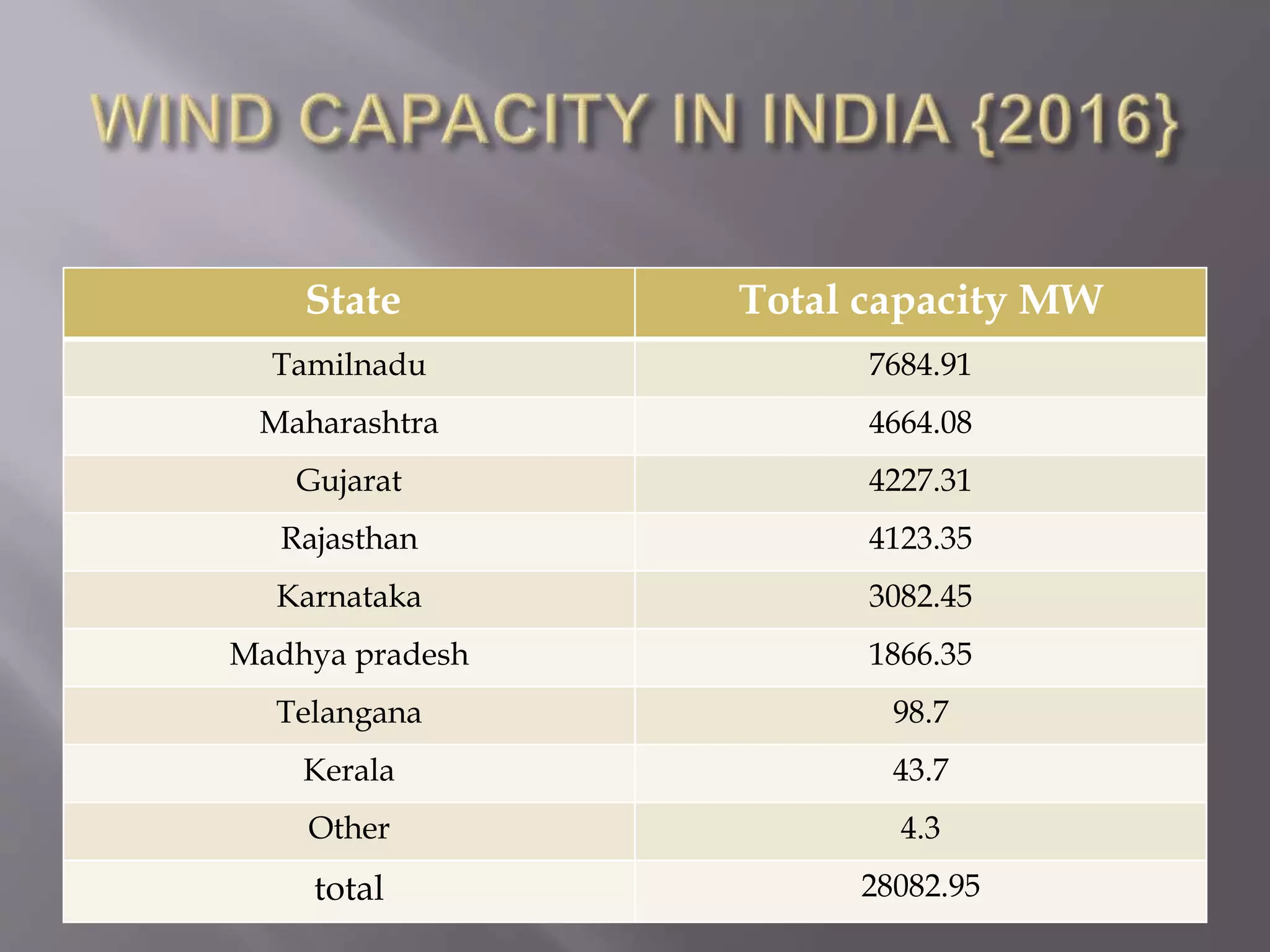
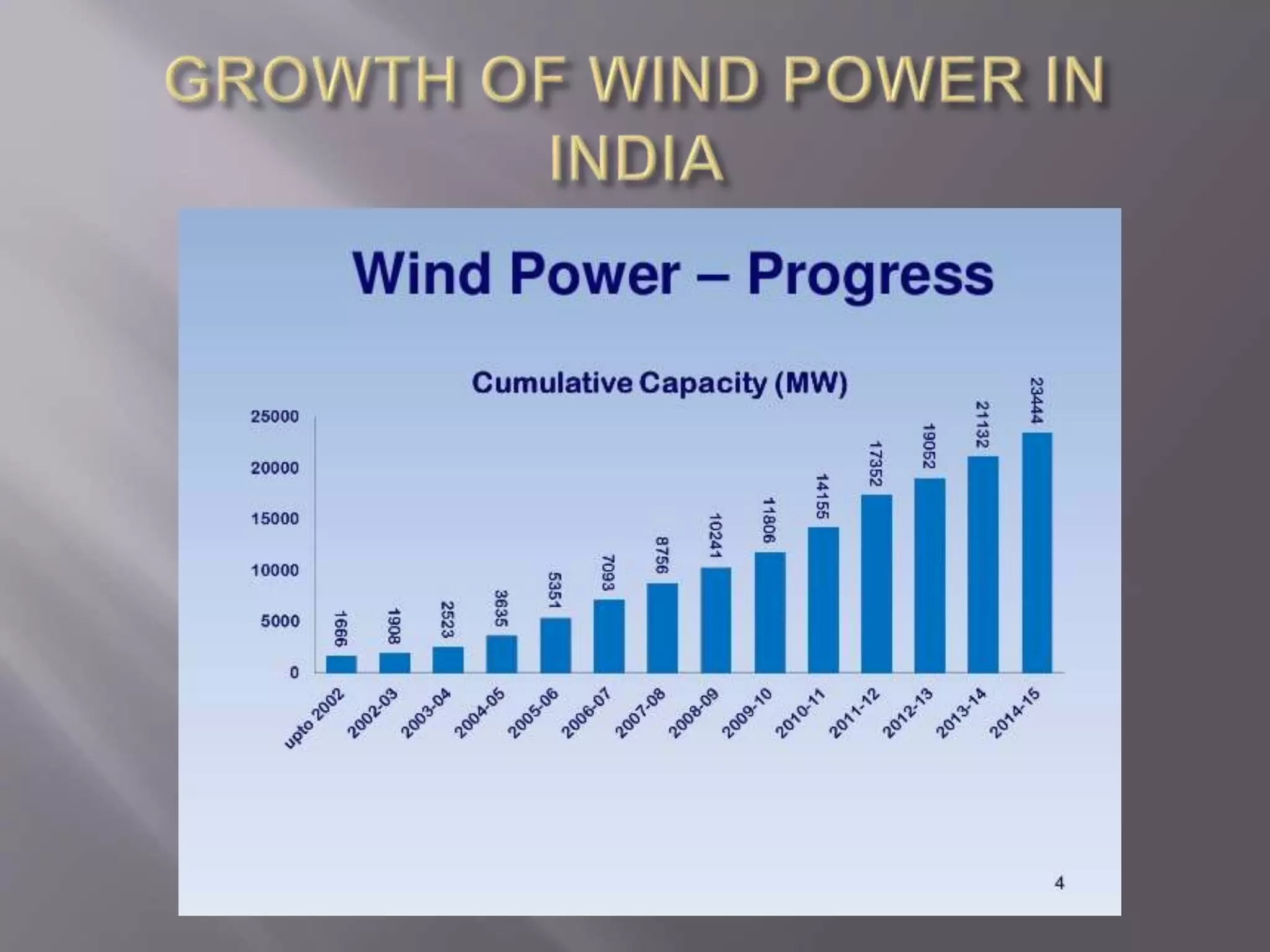
![ Wind energy is considered a green power
technology because it has only minor impacts
on the environment.
Wind energy plants produce no air pollutants
or greenhouse gases[8].](https://image.slidesharecdn.com/statusofwindpowerinworldwide-180207130719/75/Status-of-wind-power-in-worldwide-46-2048.jpg)
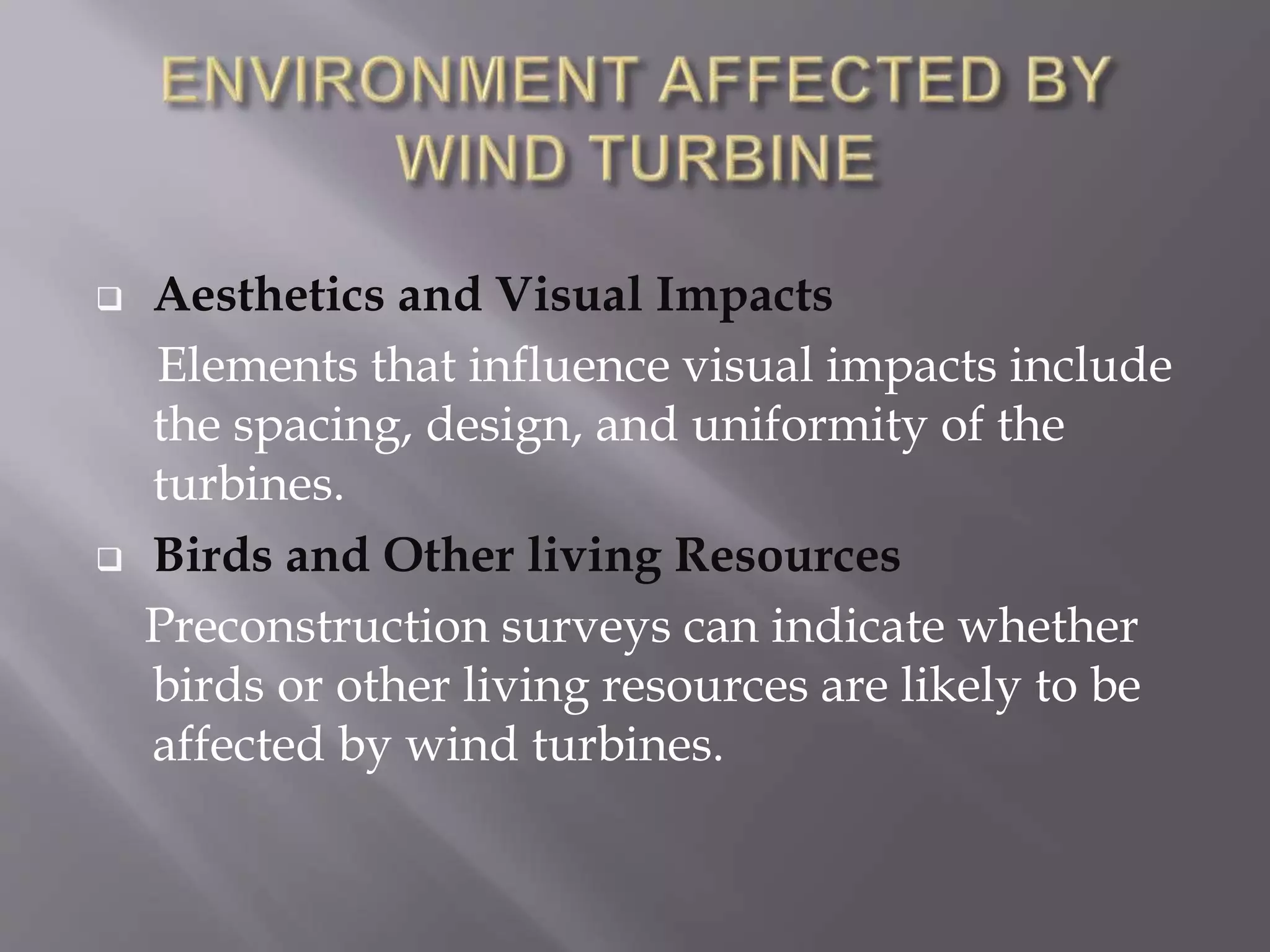
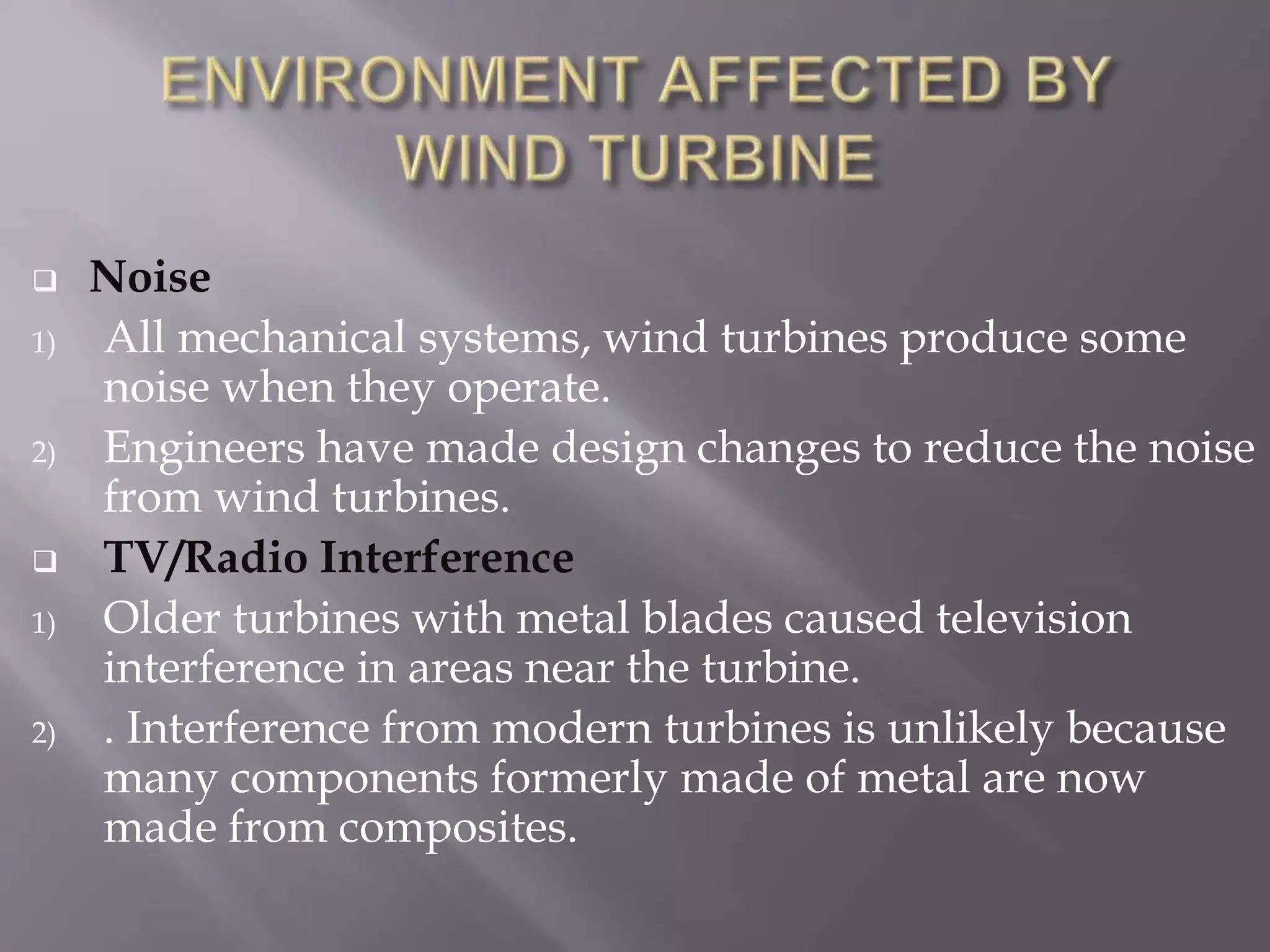
![ Global Warming
Wind energy can help fight global warming. Wind
turbines produce no air emissions or greenhouse
gases [9].](https://image.slidesharecdn.com/statusofwindpowerinworldwide-180207130719/75/Status-of-wind-power-in-worldwide-49-2048.jpg)
